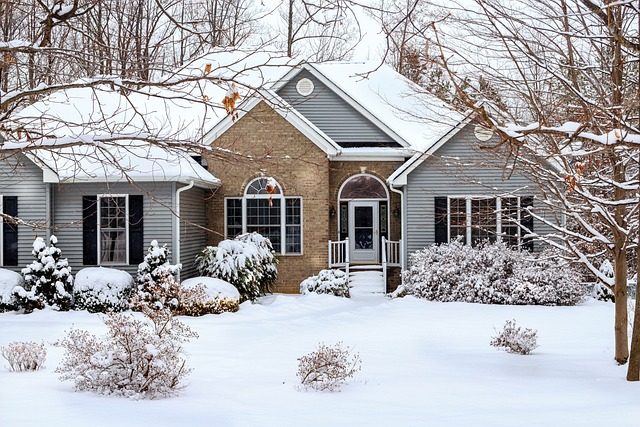Table of Contents:
- Introduction
- Understanding Vinyl Siding
- Factors Influencing Vinyl Siding Installation Cost
- Estimating Vinyl Siding Installation Costs
- Types of Vinyl Siding
- Cost-Effective Vinyl Siding Installation Tips
- Financing Options for Vinyl Siding Installation
- Case Studies: Vinyl Siding Installation Costs in Different Regions
- Additional Resources
- Conclusion
Vinyl siding is attractive to homeowners for a variety of reasons. It’s essential to understand its appeal, the factors that impact installation cost, and why budgeting for vinyl siding projects is crucial.
Many homeowners choose vinyl siding because it offers an appealing, versatile exterior siding finish. It comes in various styles and colors, enhancing your home’s aesthetic. Additionally, vinyl siding is known for its durability and minimal maintenance requirements.
Numerous factors influence the cost of vinyl siding installation. These include the size and layout of your home, the quality and type of vinyl siding material you select, labor costs, removal of existing siding, vinyl siding costs (if needed), and geographic location.
Budgeting is essential when considering a vinyl siding project. It allows you to plan financially, ensuring you can cover material and labor costs. Without a budget, you risk overspending or sacrificing quality, potentially leading to future expenses.
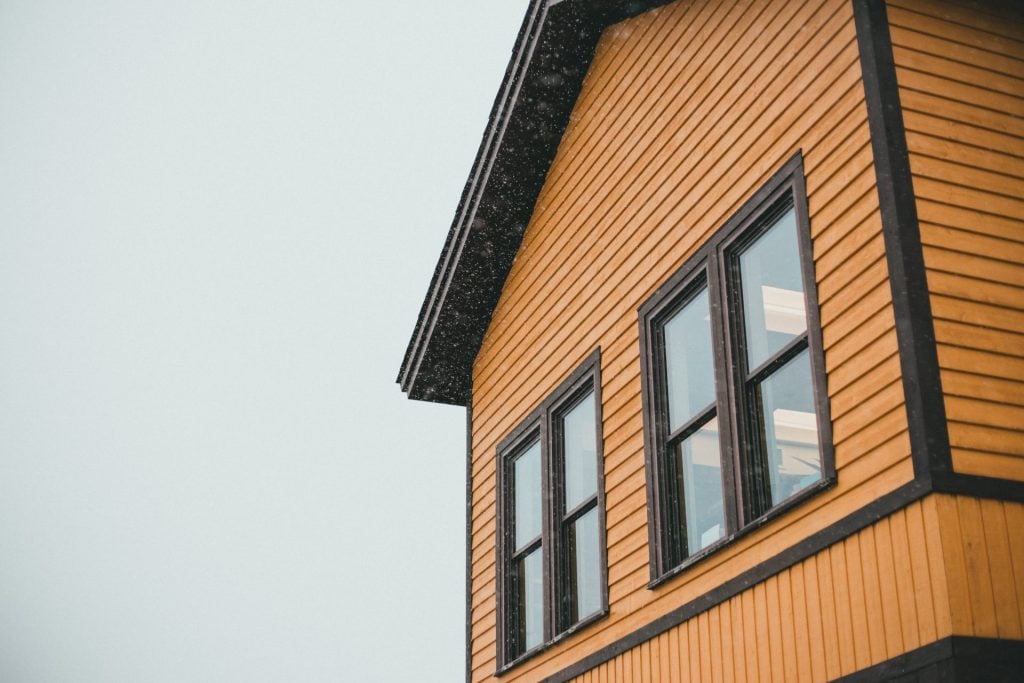
How much does vinyl siding installation cost?
The average cost to install vinyl siding is P364,000.
While the average project cost is about P392,000, more expensive endeavors are possible.
To break that down, the average cost of installation and supplies is between P168 and P196 per square foot vinyl sheet, with the final price varying based on factors including the size of your house, the quality of the materials you choose, and the going rate for labor in your region.
Understanding Vinyl Siding
What is vinyl siding
Vinyl siding is a type of exterior cladding for houses. It’s made from PVC (polyvinyl chloride) resin and comes in long panels that mimic the appearance of traditional embossed wood grain siding.
Advantages of vinyl siding
There are several benefits to choosing vinyl siding. It’s highly versatile, offering various colors and styles to match your home’s aesthetics. CVinyl siding is also known for its affordability compared to other siding materials.
Longevity and durability
Vinyl siding is designed to withstand the elements. It doesn’t rot, warp, or corrode like wood or metal siding might. It’s also resistant to pests, like termites, that can damage other siding materials.
Low maintenance requirements
One of the most significant advantages of vinyl siding is its minimal maintenance. Unlike wood siding, which needs regular painting and sealing, vinyl siding only requires occasional cleaning to maintain vinyl siding its appearance.
Factors Influencing Installing Vinyl Siding Cost
The bigger your house, the more vinyl siding material you’ll need, directly impacting the cost. Complex layouts with many corners or unusual shapes can also increase labor costs.
The type new flooring and quality of vinyl siding you choose significantly affect the price. Premium flooring options may cost a few dollars more upfront but offer excellent durability and aesthetic appeal.
Hiring professionals for installation is an expense. The complexity of the installation job, like working on multi-story homes or uneven terrain, can also increase labor costs. If you have old siding that needs removal before installing vinyl siding, this is relatively simple process but adds extra labor and disposal costs. Consider if you want extra features like rigid board insulation, trim, or decorative elements, which will add to the overall cost.
Prices can vary depending on where you live, with regions with higher living costs often charging more for services. Climate can also affect installation methods and costs, especially in extreme weather.
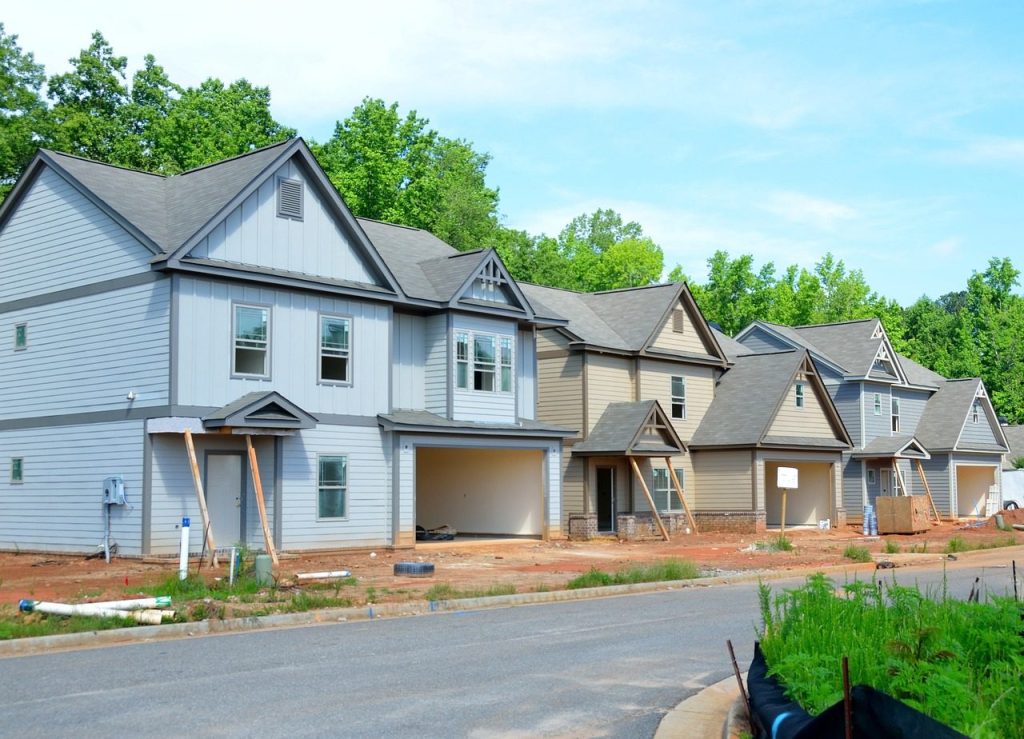
Estimating Vinyl Siding Installation Costs
calculating vinyl siding cost per square footage
Measure the exterior walls of your home to determine the per square foot of footage that needs to be covered with vinyl siding. This forms the foundation for your cost estimate.
Material costs
Research the various price points per square foot for the type and quality of vinyl siding you want. Multiply this by the amount per square foot of footage you measured to estimate material costs.
Labor costs
Contact local contractors or installers for quotes on labor. Labor costs can vary, so getting several quotes from multiple contractors is essential to find the best deal.
Hidden costs to consider
Don’t forget to account for additional costs, such as permits, disposal of old or new siding, or unexpected repairs needed during installation.
Obtaining multiple quotes
It’s crucial to gather multiple quotes to cut costs from different contractors. This will enable you to shop around and discover the greatest deal possible.
Types of Vinyl Siding
Let’s explore the different types of vinyl siding available and how to pick the one that suits your budget and needs.
Basic vinyl siding
Basic vinyl siding offers a cost-effective solution. It comes in various colors and styles but may have fewer features than higher-priced options.
Insulated vinyl siding
This type of siding includes a layer of insulation, enhancing energy efficiency. While it’s more expensive upfront, it can lead to long-term savings on energy bills.
Premium vinyl siding
Premium vinyl log siding boasts top-notch quality, aesthetics, and durability. It often mimics the look of natural wood and comes in a wide range of styles. Expect a higher initial cost, which can significantly enhance your home’s curb appeal.
Vinyl cedar shakes and shingles
These offer a classic, deeply textured options appearance that replicates the look of cedar vinyl shake siding or shingles. They add a unique charm to your home but might come with a slightly higher price tag.
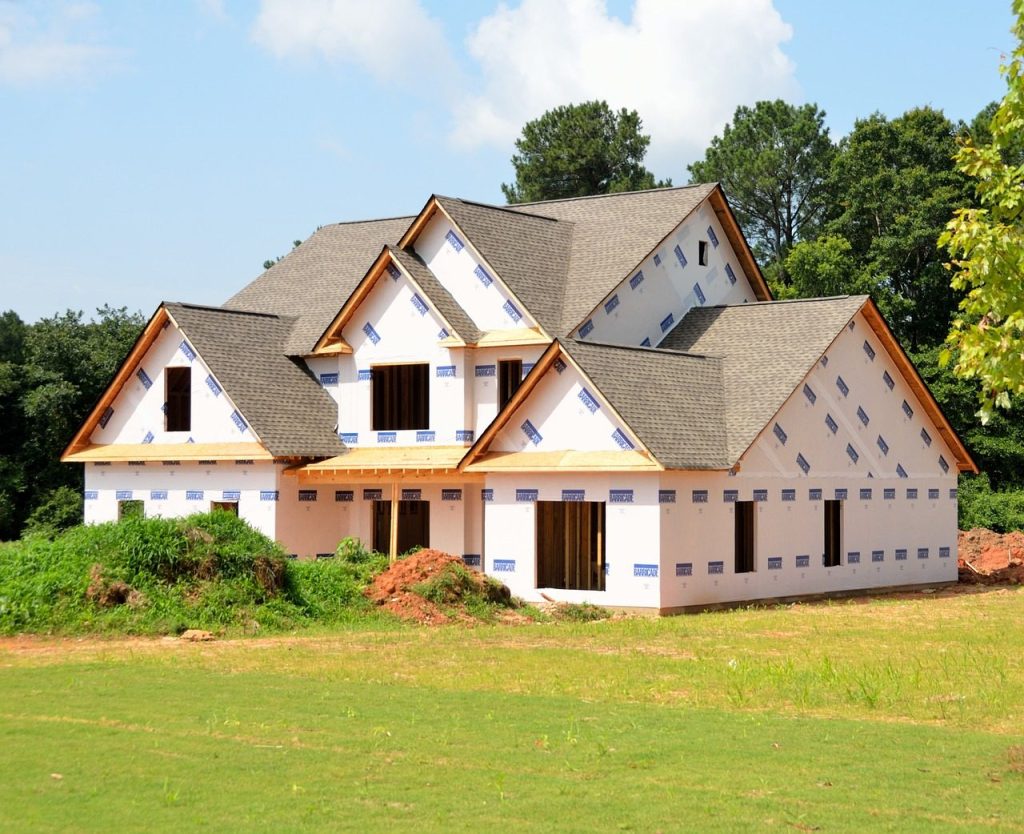
Choosing the right type for your budget
Consider your budget, desired aesthetics, and long-term goals. Basic vinyl siding can be cost-effective, but if you prioritize energy efficiency or want a premium look, be prepared to invest a bit more.
Cost-Effective Vinyl Siding Installation Tips
Consider your skills and the complexity of the job. While DIY installation can save money, complex installations are best left to professionals to avoid costly mistakes.
Thoroughly plan the project, including measuring accurately, ordering materials in advance, and having a clear timeline. Proper planning prevents delays and additional expenses. Plan your installation during mild weather. Extreme cold or hot temperatures can affect vinyl siding, making installation more challenging and potentially costly.
Invest in insulated siding to improve your home’s energy efficiency. While it may cost more upfront, it can lead to significant long-term savings on heating and cooling bills. Regularly clean your siding to prevent mold or mildew growth. Address any damage promptly to avoid costly repairs down the line.
Financing Options for Vinyl Siding Installation
Home improvement loans
These loans are specifically designed for home renovations. They offer fixed or variable interest rates, and you can choose from various repayment terms. Research local lenders or banks for loan options that suit your needs.
Home equity lines of credit (HELOC)
If you’ve built up equity in your home, a HELOC allows you to borrow against it. It’s like having a credit card with your home as collateral. Interest rates can be lower than other loans, but you’re risking your home if you can’t repay.
Government incentives and rebates
Some governments offer tax breaks or financial incentives for energy-efficient home improvements. Check with local authorities or energy agencies to see if you qualify for grants or rebates for installing vinyl flooring, insulated siding, vinyl flooring, or vinyl log siding.
Budgeting and saving for your project
Consider budgeting and saving if you prefer not to take on additional debt.
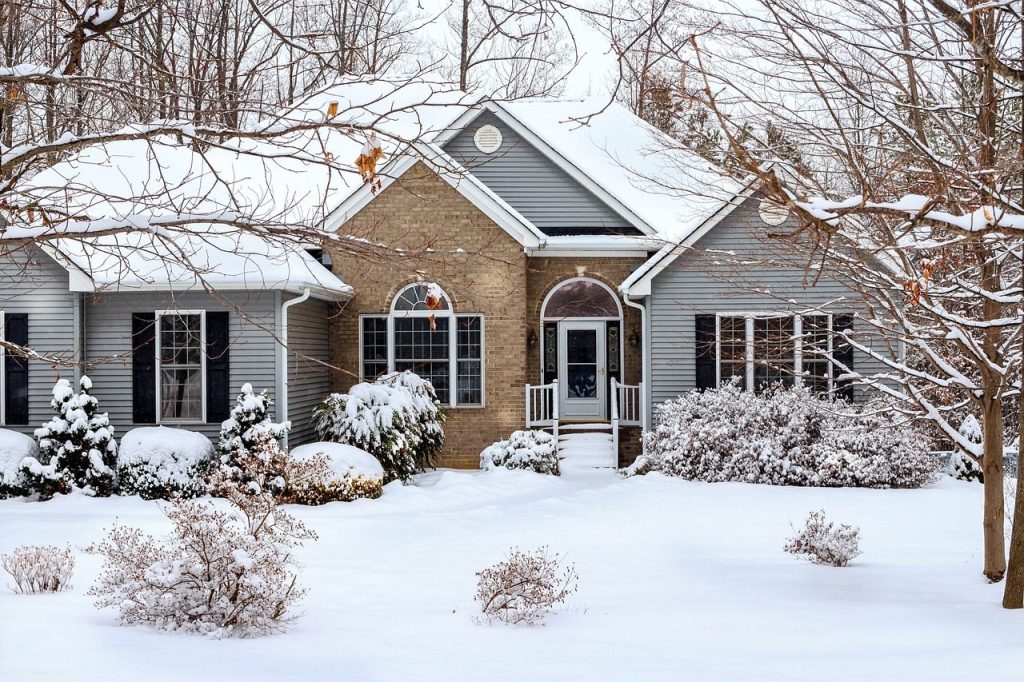
Case Studies: Vinyl Siding Installation Costs in Different Regions
Installation costs are higher in urban areas due to higher living costs and stringent regulations. Suburban areas often strike a balance, while rural areas may offer lower labor costs but possibly less local contractor and availability.
Northern regions with harsh winters may require additional insulation, impacting costs. In contrast, southern climates might have lower energy efficiency requirements but could face intense sunlight and extreme heat challenges.
Installation costs vary widely from state to state due to labor costs, demand, and local regulations. Obtain quotes from local contractors to get a clear picture of costs in your area.
Additional Resources
Look for contractors through recommendations from friends, family, or online reviews. Ensure they are licensed and insured for your peace of mind. Numerous websites and apps can help you calculate the cost of your vinyl siding project based on your specific needs and location.
They provide a rough estimate to assist with your budget planning. Regular maintenance is crucial for preserving your vinyl siding’s appearance and longevity. You can find maintenance guides online or in product manuals provided by the manufacturer.
These guides offer step-by-step instructions on vinyl plank flooring installation and maintaining your vinyl stone siding throughout.
Conclusion
We’ve discussed how factors like the property’s size, vertical vinyl siding, material, labor costs, and geographic location play a significant role in determining the total cost of your vinyl siding project.
While cost matters, don’t compromise on quality. Choosing the correct type of vinyl siding and investing in insulation can lead to long-term savings and better aesthetics.
With the knowledge of vinyl siding options, costs, and financing methods, you can confidently plan and execute to install vinyl siding or stone siding for your home improvement project, ensuring it fits your budget and enhances your home’s value and appearance.
Remember, a well-executed vinyl siding project can offer years of beauty and durability to your home’s exterior front.
And if you are looking for a new home with beautiful, quality built vinyl siding, perfect community, and more outstanding features, check out the La Posada by Brittany Corporation Philippines.
Suggested Read: Where To Buy Unique Art Pieces For Your Luxury Home
Suggested Read: Operating Budget: Everything You Need To Know
Suggested Read: Siding Installation Cost: An In-Depth Guide
Suggested Read: Museums in Metro Manila You Can Visit
Suggested Read: Fence Installation Cost
They clearly mark the boundaries of a property, preventing disputes and misunderstandings with neighbors.
By providing a visual and physical indication of property lines, fences offer a straightforward solution to property demarcation. This function not only fosters neighborly relations but also ensures the orderly division of land.
Guardian of Spaces
At its core, a fence is a guardian of our spaces, a sentry that offers protection and security.
Security is one of the primary functions of a fence. It acts as a deterrent to trespassers and potential intruders, creating a physical barrier that bolsters our peace of mind. Beyond security, fences provide privacy, shielding us from the prying eyes of neighbors and passersby.
They allow us to enjoy our outdoor spaces without feeling exposed, fostering a sense of seclusion within the confines of our property. Fences have long been an integral part of our lives, serving various purposes ranging from security and privacy to aesthetics and property delineation. Among the key factors that define the effectiveness and longevity of a fence is the process of fence installation.
Whether it is a wrought iron fence, vinyl fences, barbed wire fence, or a classic wooden fence, the installation is a crucial step that can greatly influence the overall success of a fence project.
Types of Fences
Wooden Fences
Wooden fences are a classic choice known for their rustic charm and versatility. They can be used to enclose properties, create garden boundaries, or enhance the aesthetics of a home. While wood fences require regular maintenance, they offer a timeless appeal.
Vinyl Fences
Vinyl fences have gained popularity due to their durability and minimal maintenance requirements. They are available in various styles and colors, making them a versatile choice for homeowners.
Wrought Iron Fences
Wrought iron fences exude elegance and provide excellent security. Their ornate designs can enhance the curb appeal of a property. However, they may require more maintenance to prevent rust.
Metal Fences
Metal fences, including steel and aluminum, are durable and provide security. They are commonly used in commercial and industrial settings but can also be chosen for residential applications.
Chain Link Fence
Chain link fences are known for their affordability and utility. While they may lack the privacy offered by other materials, they are excellent for security and are often used in sports fields, schools, and industrial areas.
Barbed Wire Fence
Barbed wire fences are primarily used for agricultural and security purposes. They are effective at keeping intruders out and livestock in, but their use is subject to specific regulations.
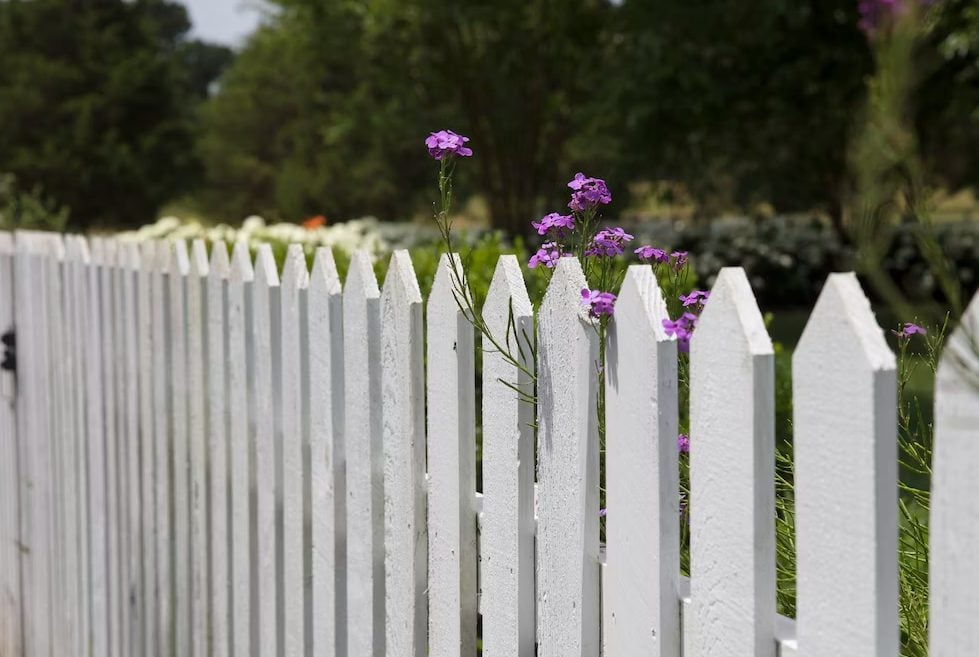
Average Fence Installation Costs
The average cost of installing a fence is about 227,600 pesos for about 155 square feet.
The average cost to build a fence is between 136,560 and 307,860 pesos, but more expensive projects can cost as much as 739,370 pesos. In the end, the cost of putting up a fence depends on a number of things, such as how much fencing you need, what materials you use, and how much work costs in your area.
Even though some people choose to do it themselves, adding fencing can be a harder home improvement job than it looks. You might need to get a permit from your neighborhood or city council before installing.
It’s also important to know where your property lines are so you don’t step on your neighbors’ land. Lastly, you’ll need to make sure that your post holes don’t get in the way of utility lines or pipes.
You may need to call your local utility source to do this. If you hire a professional fence company, the people who work there will know how to do all of these things and can help you through the process.
How much does fence installation cost per foot?
One of the biggest factors that will determine the overall cost of your project is the size of your yard.
Fence cost is usually measured in linear feet, which is just a fancy way of saying 12 inches in length. The cost of fencing is typically around 398 to 1,195 pesos per linear foot, with an additional 569 pesos per linear foot for labor.
If you decided on getting a contractor, the total cost of your project could be around 852 to 1,998 pesos per linear foot. It is important that you measure precisely when planning how much fencing you’ll need. It may also make sense to hire a land surveyor to get a truly accurate measurement.
Getting a land surveyor might cost anywhere from 28,450 pesos to 79,660 pesos, but it will give you the confidence to move forward with your project and help you avoid making a mistake that could be very expensive.
How much does fence installation cost by material?
The fence material cost itself can significantly impact the total cost to install new fencing.
When you need a new fence, you can choose from metal or chain, wood, vinyl, and more expensive materials like aluminum and cast iron. Prices for these different materials can range from 171 pesos to 3,812 pesos per linear foot. Read on to see how each material is priced so you can get a better idea of how much it will cost.
Chain Link Fence
Chain-link fences are usually the least expensive choice. The materials alone cost between 284 and 569 pesos per linear foot.
When you add in the cost of work, the average cost to put up a chain-link fence is between 739 and 1,138 pesos per linear foot.
Advantages:
Chain-link fences are low-maintenance, meant to last a long time and are relatively simple to install.
Disadvantages:
Chain-link fences are not as aesthetically pleasing as other types, but they can be spruced up with plants.
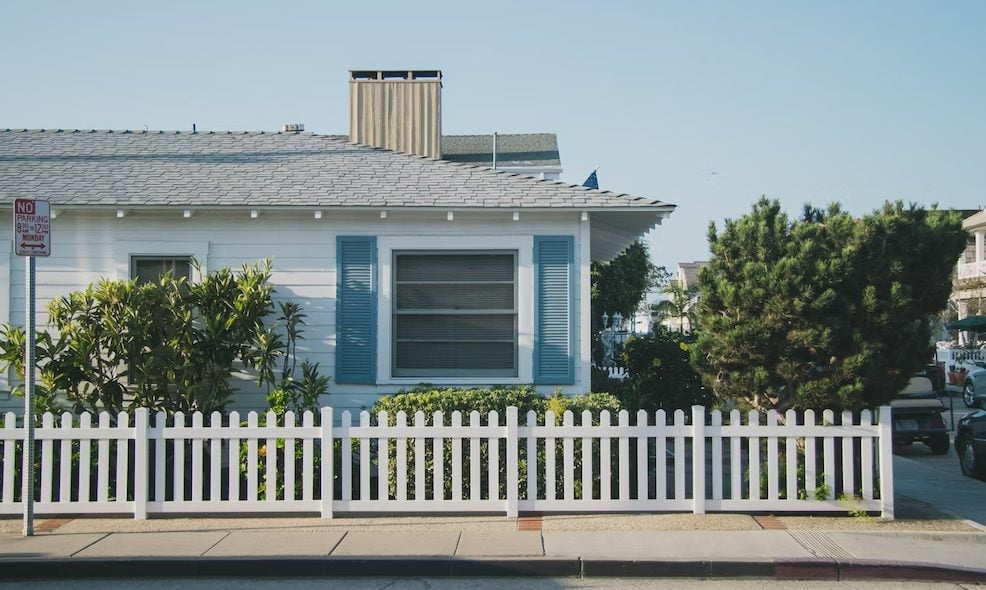
Wood Fence
For those who want a classic picket fence, wood is just the material.
Wood fences are the middle range option, which costs around 171 to 1,195 pesos per linear foot for materials. When you add in the cost of work, the average cost to put up a wood fence is between 512 and 2,309 pesos per linear foot.
Even among wooden fences, prices can be very different based on the type of wood you choose and how good it is. Pine and cedar are two of the least expensive options. Redwood and Douglas fir, on the other hand, will cost quite a bit more.
Advantages:
Wood is a timeless choice that will look beautiful in your yard and perhaps even add value to your home. Wood fences can also offer more privacy than metal fences, since they have solid planks.
Disadvantages:
Wood fences do require more maintenance than other types. Sealants and paints can help protect against water damage. Some types of wood are also more are also more water-resistant than others. Finally, adding a gate to a wooden fence can be especially costly.
Vinyl Fence
A premium choice, vinyl fences present an appealing appearance and are easy to maintain.
Typically, vinyl fence installation’s cost ranges from 739 to 1,536 pesos per linear foot for materials and 1,081 to 2,335 pesos per linear foot for labor costs. Vinyl fencing offers a clean aesthetic and is available in various colors, making it a favored option.
Advantages:
Vinyl demands minimal maintenance to retain its cleanliness and structural integrity. Being a type of plastic, it exhibits exceptional durability.
Disadvantages:
Vinyl’s durability also means it’s not environmentally friendly, as it is non-biodegradable, unlike wood. Additionally, it tends to be more expensive compared to some other alternatives.
Wrought Iron Fence
An elegant yet notably costly choice, wrought iron fences usually come at a price range of 1,309 to 3,880 pesos per linear foot for materials and can cost between 2,106 to 4,834 pesos per linear foot, inclusive of labor costs.
For homes with a traditional architectural style, wrought iron fencing featuring decorative scrollwork serves as a fitting exterior enhancement.
Advantages:
Wrought iron fences possess a distinctive appearance and can be crafted into intricate designs. They are also sturdy and durable, particularly in regions with limited precipitation.
Disadvantages:
In areas with substantial rain or snow, wrought iron fences may be prone to rust. They demand more maintenance compared to other fence types and are generally more expensive.
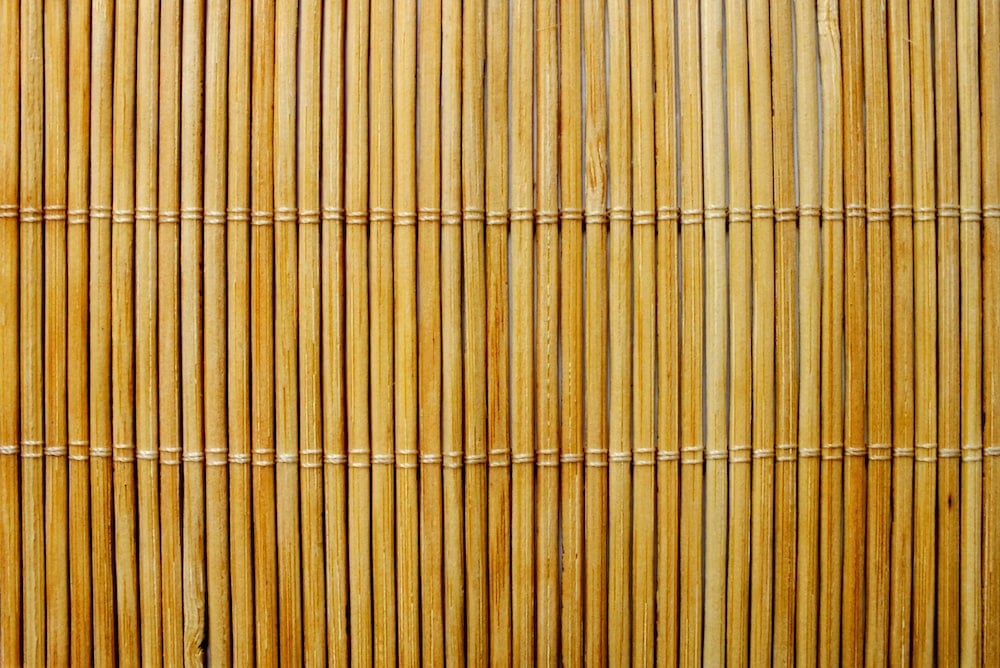
What is the typical cost of installing a privacy fence?
Fence height represents another factor that can influence the final cost of your project. While most fences are less than 4 feet in height, privacy fencing falls into a unique category.
Taller and more enclosing than a standard fence, privacy fences typically incur expenses ranging from 1,423 to 2,332 pesos per linear foot, including installation costs. Given their purpose of fully enclosing your yard and acting as an effective barrier, privacy fences are typically 4 to 6 feet tall and do not have gaps between slats.
Most commonly, they are constructed from either wood or vinyl.
Advantages:
Privacy fences are ideal for households with pets or children, providing an enclosed area for play. They also offer enhanced yard privacy, which can be desirable for properties with pools or in densely populated neighborhoods.
Disadvantages:
Privacy fences come at a higher cost compared to standard fences and may not possess the same visual appeal. It is also essential to consult with neighbors or homeowners’ associations before erecting a privacy fence, as it can significantly impact the overall appearance of the area.
Impact on Property Value
The installation of a fence can have a significant impact on property values. Taller fences, for example, can enhance security and privacy, which can make a property more appealing to potential buyers.
A well-installed and maintained fence can increase a property’s aesthetic appeal, thereby boosting its market value. Additionally, the choice of materials can affect property value.
Vinyl fences and wrought iron fences are often viewed as attractive features that require minimal maintenance, potentially increasing a property’s desirability. On the other hand, an old fence in disrepair or a poorly installed fence can detract from a property’s curb appeal and reduce its value.
Only the Best Fence for Your Brittany Home
In the world of real estate, where dreams find their brick-and-mortar embodiment, Brittany Corporation stands as a luminary, a pioneer of luxury home communities that transcend the mundane and embody the extraordinary.
With a unique vision, Brittany has redefined opulence, crafting homes that are not just places to live but canvases upon which dreams are painted.
These luxury properties, enriched with character and sophistication, draw inspiration from the world’s most enchanting destinations, offering the essence of these far-off paradises to the privileged few who call them home.
In the realm of luxury real estate, every detail matters, and fences, often taken for granted, are no exception. They serve as silent sentinels, guardians of privacy, and sculptors of security.
Yet, fences do not merely demarcate boundaries; they are pivotal players in the intricate dance of property values.
Suggested Read: Pet-Friendly Home Features To Consider
Suggested Read: what Defines Spanish Interior designs
Suggested Read: 10 World-Class Sports To Experience
Suggested Read: Business Trends & Forecasts of 2023
Suggested Read: Is Villar City Safe To Live In?
Since big cities continue to be the nation’s economic center and the greatest site to begin an investment, a larger percentage of the people may desire an urban lifestyle. Undoubtedly, a big city draws in investors, job possibilities rural residents, and prospective homeowners. You need to step up your game and secure a house and lot in the Philippines within city areas due to the constant value appreciation of real estate properties.
If you had the choice and resources, would you rather live in a big metropolis or a rural town? Which region of the nation do you believe will give you a brighter and happier future? These are challenging questions that you should carefully consider. Why not think about the positive qualities of each area instead of focusing so much on the drawbacks?
What is it about the rural way of life that you find appealing? Or do you want to reside outside, close to nature, green space, clean air, and the great outdoors? City life may be enjoyable to those who appreciate shopping centers, movie theaters, city skyscrapers, amusement parks, and even airports. Is it possible to simultaneously benefit from urban living and rural lifestyles? Definitely!
Advantages in Living in the City
Although we value rural lifestyle and the calm, quiet, and straightforward way of life that comes with living in the country, it’s also critical to acknowledge that the world is changing. Here are some useful advantages of city living to assist you also appreciate its beauty.
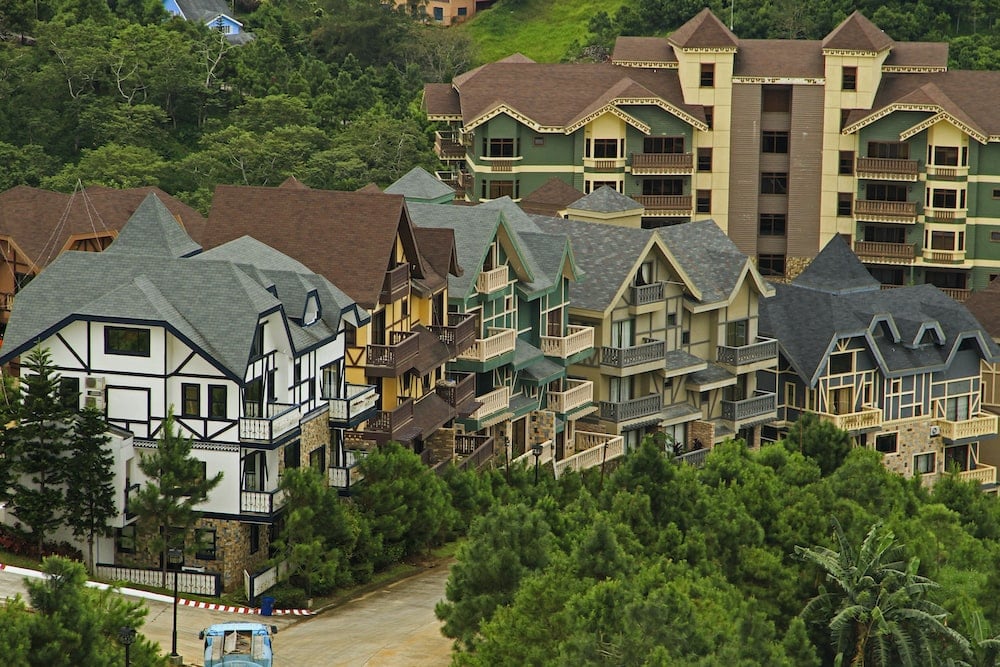
Property Trends 2023 #1: Fast paced life and convenient living
Living in a city may be preferred to rural life by those who like an active lifestyle. We want to complete our tasks as swiftly and conveniently as possible while things are happening around us. In fact, situations like these are typical in urban settings. People are frequently seen rushing from one location to another. Almost everyone is thinking about something. It’s not surprise that many people favor city living given the fast-paced way of life.
Property Trends 2023 #2: Various styles and choices for city living
Living in an urban area offers a lot more variety and alternatives than living in a rural area. This has been influenced by both cultural diversity and population increase. People from diverse range backgrounds and cultures coexist as a result. Urban areas are more connected to the rest of the diverse population than rural places are. An individual will benefit from understanding their own preferences, likes, and dislikes, as well as who they are and the path that will present them with the most opportunities.
Property Trends 2023 #3: Easier public transportation system
Due to the high population density of metropolitan regions, public transit is essential for city dwellers.. An efficient and easy access public transport and transportation system is a city’s lifeline. It must be dependable, reachable, and efficient. Even if owning a private vehicle could be important, doing so is a big choice that the owner must make. This is due to the fact that the majority of regular and everyday trips may be conducted by public transportation. Living in a city is seen to have its benefits, one of which is having access to public transportation.
Property Trends 2023 #4: More job opportunities and side hustles
Big cities offer far more career options and job prospects than tiny villages. There are many different employment opportunities and positions available in small towns, however the job market is much more competitive, particularly in major cities.
An increasing variety of professional development training courses are also becoming more available due to the high demands of various jobs. Instead of living in a province where training programs are extremely expensive owing to a lack of competition, it is now possible to enroll in reasonable courses to improve your grasp of your talents or update your abilities for job progress. This is the main factor driving the large number of people who move from rural areas to urban areas.

Property Trends 2023 #5: Greater chances to broaden your network and connections
Living in a large city makes it simple to meet new people and broaden your network, which is a crucial strategy for people looking for new chances. In a big city, you will always run into new people. Who knows, maybe these new people in your life will expose you to an opportunity. Living in a city also gives you access to the wealth of knowledge and information that is accessible online and through computers in urban areas.
You’re likely to make a few new friends as you acclimate to city life and grow your network of connections and networks, which will increase your opportunities.
Property Trends 2023 #6: Improved infrastructures and educational system
Many cities provide a variety of educational opportunities and institutions. Despite being more costly, they also make it simpler to obtain a bank loan in the city. Moving to a city where your children can experience a wider variety of options such specialized shops, and a more modern lifestyle and improved facilities can be good. Additionally, because wages are greater in cities, you will be able to save money for your child’s education or perhaps even one day buy a piece of real estate.
Property Trends 2023 #7: Greater access to general healthcare and information
In most cities, there are more options to live a healthy lifestyle, including access to trained medical personnel and chances to get vaccination opportunities. It is well known that those who lead fulfilling, meaningful lives, and devote themselves to higher ideals tend to live longer. In large cities, there are a lot of non-governmental organizations (NGOs) that work to raise awareness of health-related concerns and give the less fortunate access to flu shots.
Additionally, an increasing population may enhance immunity. City dwellers are encouraged to stroll through city neighborhoods and exercise by the abundance of parks and gyms. Pollution is a negative of cities that can lead to ill health issues and is an issue that cities are working to solve.
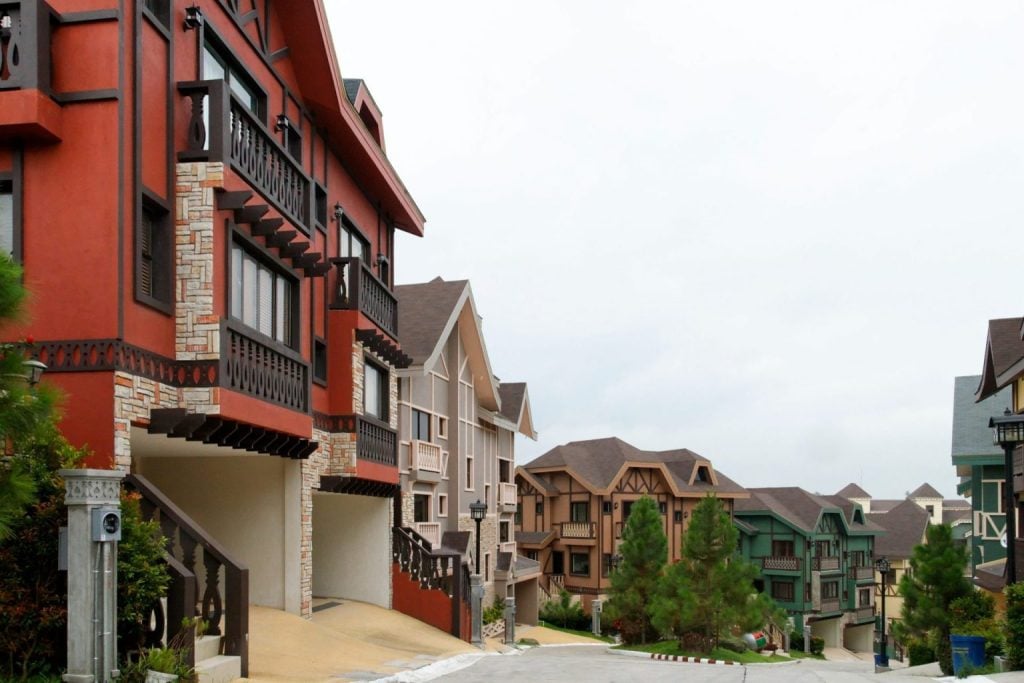
Property Trends 2023 #8: Multiple housing options
Owning a property isn’t always practical in urban areas, especially large cities. It depends on the individual’s salary and financial situation. Urban areas, though, provide more choices; you can always rent a home or live in a house-share. Co-living is one such concept of urban life that is gaining popularity. Due to the diversity of participation, you have more options to suit your requirements and financial constraints. The huge range of housing alternatives is just one of the many advantages of city living. Therefore, residential developments like Brittany Corporation are the best option for you if you’re seeking for a luxury home within the metro.
Live the City life with Brittany!
Living in a city is typically connected with a higher level of living because there are greater services and amenities available. There are broader range benefits to living in a city, all of many benefits which are advantageous. The biggest shopping malls, grocery stores, specialty stores, and showrooms are located in urban regions. This benefit is especially applicable to large cities. There is always a dealer or someone who can satisfy your needs, no matter how specific they are. Such specialty shops are made possible by the dense population of cities.
Whether you’re relocating to a major city to start a family, pursue a better education, or find work, it’s critical to make sure it’s exactly what you want. The fact that they must pay higher costs and navigate congested streets is not to everyone’s taste. Not to mention the difficulty finding parking in the city and the pollution. For this reason, Brittany Corporation has purposefully conceptualized and execute luxury home communities in the Philippines. There are several possibilities for you if you’re thinking about relocating rural living close to the metro.
For additional information, Visit Brittany’s official property page to know more about Brittany’s beautiful thematic offerings or follow us on our Linkedin, Facebook, Twitter, and Instagram accounts!
Suggested Read: Live in your America: Dream Home Right Here in the Philippines
Suggested Read: Benefits of Tree Planting: Social and Environmental
Suggested Read: The Suburban Living and All The Luxury it Offers
Suggested Read: The Benefits of Investing in Vacation Homes
Suggested Read: Why Tagaytay is Perfect for its Residents
Are you planning to upgrade your luxury lots in Tagaytay? It’s time to get a asphalt driveway!
Now, you might be thinking about how to achieve a nice-looking driveway like the most beautiful houses in the Philippines. No need to look further because asphalt paving is the way to go.
What is asphalt?
Stone, sand, additives, and liquid asphalt are the main components of an asphalt or bitumen pavement. The high viscosity of asphalt pavements holds the components of asphalt together, allowing flexibility. This is one of asphalt’s advantages.
It’s able to adjust the surface of roads depending on weather changes and ground shifts, making it a good material for your driveways.
Why get an asphalt driveway?
Homeowners can choose between paving their new driveway with asphalt, gravel, or concrete. On this matter, asphalt is usually the material of choice. It makes driveway building quick, effective, and affordable.
Many of the most beautiful houses in the Philippines have an asphalt driveway to go with them and here’s why:
Asphalt is quick to install
Do you want a quick installation time? Then an asphalt driveway is the right choice. Better than a concrete driveway, an asphalt driveway may be laid in as little as 1-2 days and be used as soon as 5 days once dried.
The asphalt driveway is quieter to drive on
No more late-night disturbance by relatives or friends who frequently arrive home late at night since asphalt driveways will muffle any engine and transmission sounds.
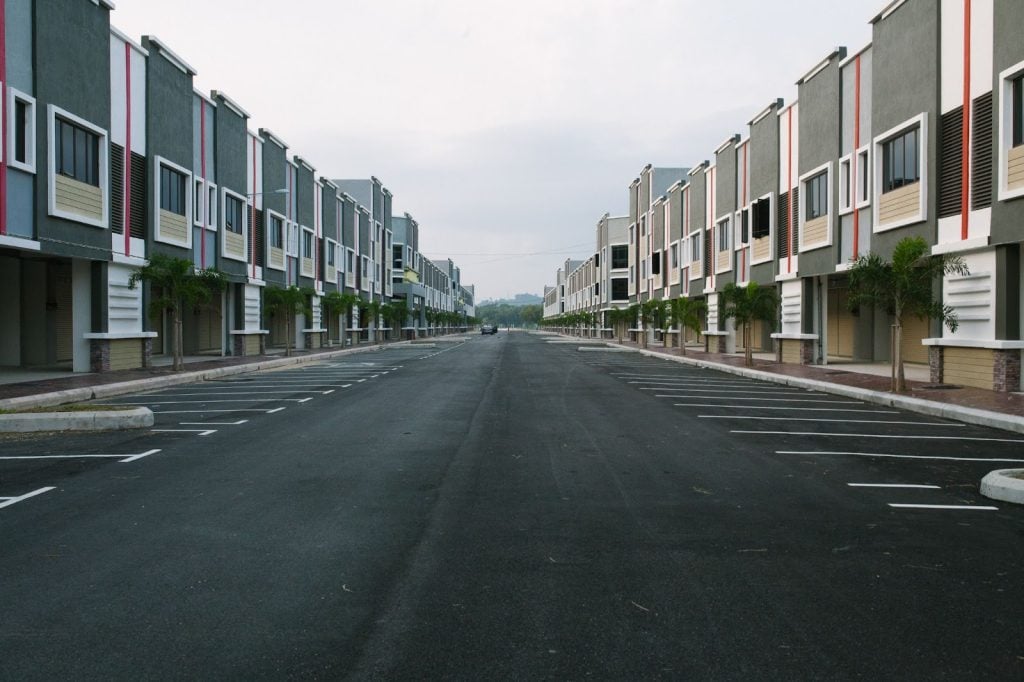
There are safety features on asphalt driveways
Asphalt driveways have safety features both for cold and hot areas. This type of material is skid-resistant, protecting your driveway from cold weather. It also has glare-reduction properties and the ability to melt ice quicker than stone pavements.
Asphalt is durable
Due to its elasticity, asphalt is durable enough to sustain brief overloads without suffering significant harm.
Asphalt is cost-effective
When it comes to their original price as well as future prices, the cost of asphalt driveway materials is more bearable. Asphalt comes in many types and requires low maintenance.
How much does an asphalt driveway cost?
Asphalt driveway cost varies on a lot of factors. In the Philippines, the cost of asphalt driveway material this year can start from ₱5,000 to ₱55,000 ($85 – $965).
Asphalt driveway cost per square foot
Installation of an asphalt driveway is measured per square foot. If you’re planning to use asphalt for your pre-selling lot for sale, for example, an asphalt cost is around ₱350 to ₱800 ($7 – $15) per square foot.
However, keep in mind that asphalt driveway costs might vary depending on certain elements.
What factors affect driveway prices?
Many factors affect how much an asphalt driveway costs. Whether you’re creating one for additional automobiles or extra courtside seating for community basketball games, these elements can influence the cost of an asphalt driveway.
Location
The cost of an asphalt driveway may be impacted by the installation’s location owing to travel expenses, local fuel prices, typical living costs, and labor costs. Building one in Alabang might cost differently in Santa Rosa Laguna.
To guarantee that you are receiving a reasonable price for the service, it is advised that you do your homework and inquire about at least three local driveway installation businesses near you.
Also, before constructing an asphalt driveway, you should also think about the local environment because this material is more resilient in cool or temperate areas.
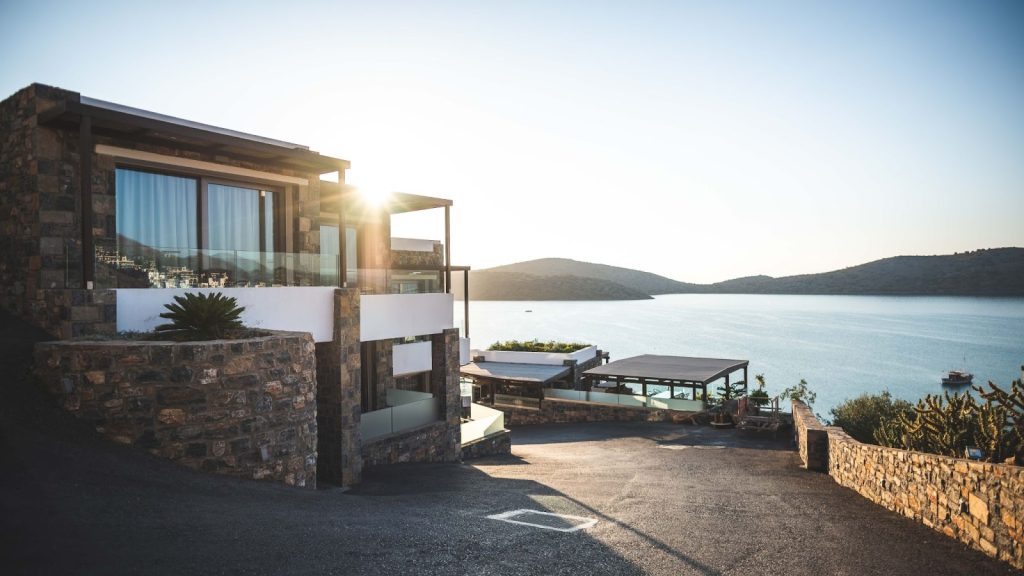
Size of Project
New asphalt is frequently sold per ton by asphalt producers. Depending on the thickness of its layers, one ton may cover an area of between 30 and 80 square feet. This means that asphalt driveway cost, price of supplies, and labor included, increase as the driveway gets bigger.
Type of Material
Hot mix asphalt is the typical asphalt used in most driveway construction. Per ton, this asphalt costs ₱5,600 to ₱11,300 ($100 – $200). The price of a bag of cold mix asphalt, on the other hand, ranges from ₱570 to ₱2,800 ($10 – $50).
For a lighter asphalt driveway cost, RAP or Reclaimed Asphalt Pavement is an ecologically beneficial alternative to fresh asphalt that will ultimately be less expensive. The price per ton of this asphalt ranges from ₱570 to ₱1,100 ($10 to $20).
While colored asphalt, which ranges in price from ₱680 to ₱960 ($12 to $17) per square foot, is a hot mix type of asphalt with colors added. Driveways with stamped asphalt come at the same price.
The final option is porous asphalt with prices from ₱450 to ₱560 ($8 to $15) per square foot and is usually covered in a layer of crushed stones to enhance drainage.
Replacement vs. New Driveway
Another factor that can affect an asphalt driveway installation cost is if it’s new or a replacement. A new asphalt driveway costs at least ₱800 ($15) per square foot.
This price includes labor, supplies, and other minor preparations. On the other hand, at an average price of ₱900 ($16) per square foot, replacing an existing asphalt driveway will cost somewhat more than installing a new one.
How do you maintain an asphalt driveway?
A black coat and clean lines on a well-kept, crack-free asphalt surface are appealing features that can raise the value of a house and lot for sale or just a pre-selling lot for sale. It significantly increases a home’s appeal and invites people to visit and check it out.
Knowing the proper maintenance of an asphalt driveway is needed to keep it looking good.
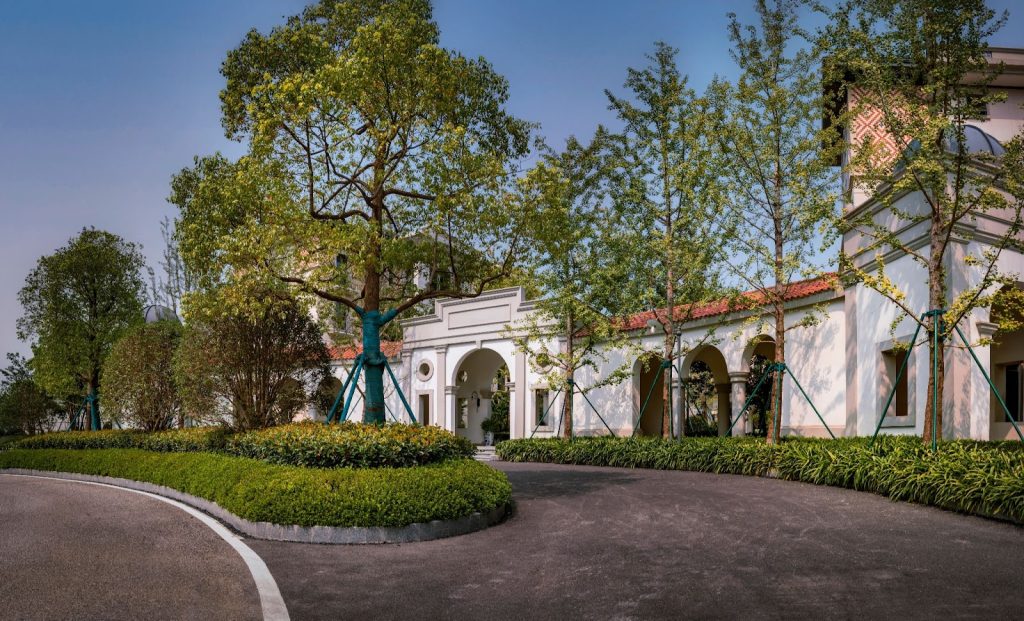
Prepare
Preparation is key for effective and successful asphalt driveway maintenance. Begin by ensuring that the surface is clear of trash, loose asphalt, or plants. If not, you risk wasting time, energy, and resources, adding up to your asphalt driveway cost.
Repair
Next, repairing cracks and potholes on the blacktop is essential. An asphalt crack will allow natural elements to erode the surface. Cracks, if not repaired, eventually develop into potholes.
If you skip this step, you’ll suffer from more damage in the long run. To save from potential extensive excavation and replacement, seal cracks right away and fill potholes.
Seal
Repairments only go a certain way. The best way to take care of your asphalt driveway is asphalt sealing or seal coating. This is due to the fact that a solid coating of asphalt sealer, which should be reapplied roughly every two years, maintains the blacktop’s flexibility. It also acts as a protective barrier between the asphalt and the environment.
Repaint
After the aforementioned steps, line striping is the immediate final touch. Repainting the lines that show where to park is for safety measures. Without it, the parking lot would appear incomplete. This may also result in cars not knowing where to go, defeating the purpose of a good driveway.
All in all, asphalt driveway cost is reasonable and manageable once you’ve considered the factors that might affect its construction. Whether you are laying down a new driveway or repaving over an old one, an asphalt driveway is a good way to go for a modern luxury home.
If you’re looking for a house and lot for sale that you can upgrade with an asphalt driveway, check out some of the most beautiful houses in the Philippines under Brittany Corporation. They’ve got pre-selling lot for sale in Alabang and Santa Rosa Laguna where you can build an asphalt driveway for yourself.
Suggested Read: A Comprehensive Guide Into Gravel Driveway Costs
Suggested Read: Parking Law in the Philippines: Do’s and Don’ts
Suggested Read: Driveway Styles For Your Luxury Home
Suggested Read: Driveway Trends of 2022
Suggested Read: Driveway Maintenance Tips
Table of Contents:
- Introduction
- Understanding Roof Replacement
- Factors Influencing Roof Replacement Cost
- Cost Estimation Methods
- Common Roof Replacement Materials
- Budgeting and Financing
- DIY vs. Professional Roof Replacement
- The Roof Replacement Process
- Conclusion
How much does roof replacement cost?
An area of one part per square foot roof up to 1,200 square feet has an average construction or roof repair cost of around P509,600.
The prices range from around P291,200 to P610,400, although the most costly works might increase to a maximum of P1,304,800.
The total cost of your roofing project will be determined by many factors, including the kind of the roofing materials or materials that you choose to use, the shape and size of your roof, and the amount of money that it will cost to pay workers to do the work.
Should I Replace My Home’s Roof?
Your roof is more than just aluminum shingles or tiles; it’s your roof pitch your home’s shield against the elements. It keeps you dry during heavy rain, shelters you from scorching sun, and protects you from harsh winds.
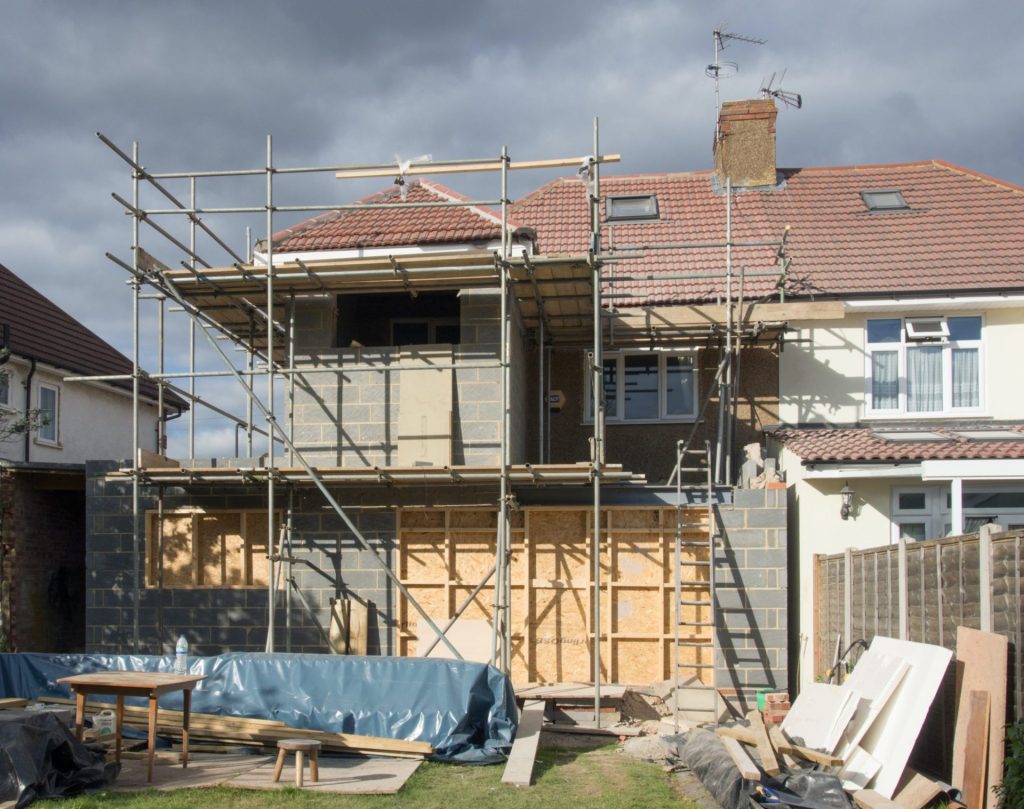
A well-maintained roof ensures a comfortable and safe living environment. No matter how much does roof how well you care for it, your roof has a lifespan. It weathers years of exposure to the sun, rain, snow, and more. Sooner or later, replacement becomes inevitable.
Knowing when to replace a roof and how much the old roof has to prepare for it is vital for every homeowner. The purpose of this article is to provide you with valuable insights into roof replacement costs alone. We’ll explore the factors that affect full of roof cost, replacement cost, roofing costs, the various roofing materials, budgeting tips, and whether to go DIY roof replacement or hire a professional.
By the end, you’ll know how to make informed decisions about your roofing costs. So, whether you’re a seasoned homeowner or a first-time buyer, stick with us as we delve into the world of roof replacement. It’s an essential aspect of homeownership that deserves your attention.
Understanding Roof Replacement
Age-related wear and tear
If your roof is rather old and the failing roof is exhibiting symptoms of deterioration, such as cracks, sagging metal roofs above, or curling shingles, you might consider having it replaced.
Leaks and water damage
Problems might occur with water stains on your ceiling, moist walls, or a musty stench. Please do not disregard them; they may tell you it is time to either replace a or replace roofing on your or replace old roofing again.
Damaged or missing shingles
It should raise a red signal if you see shingles broken, damaged, or absent from the roof above.
These are the layers of defense for your entire roof here, and if any of them are damaged, your entire roof is at risk.
Mold or moss growth
The presence of dark or green spots on your roof is an indication that moisture is being retained there. The structure of your roof may become compromised as a result of this over time.
Keep in mind that the prompt replacement of this component is essential. Don’t put things off until they get to be a significant issue.
If you know when it’s time to replace your roof, you can avoid paying for expensive roof repairs and make sure your house is secure and won’t leak.
Factors Influencing Roof Replacement Costs
Roofing Material Selection
It is essential to choose appropriate materials new roof costs. Basic asphalt shingles roofs, metal roofs, concrete tiles, and wood shingles are among the more common roof repairs, and each comes with its price tag.
Keep in mind that the choice of material may have a considerable influence on the total cost of the project.
Roof Size and Complexity
The dimensions and form of your flat roofing materials are pretty important.
Designs that are larger or more complicated need more materials and work, which may lead to an increase in price.
Additional roof reinforcement components, such as skylights or chimneys, might increase the complexity and, as a result, the cost.
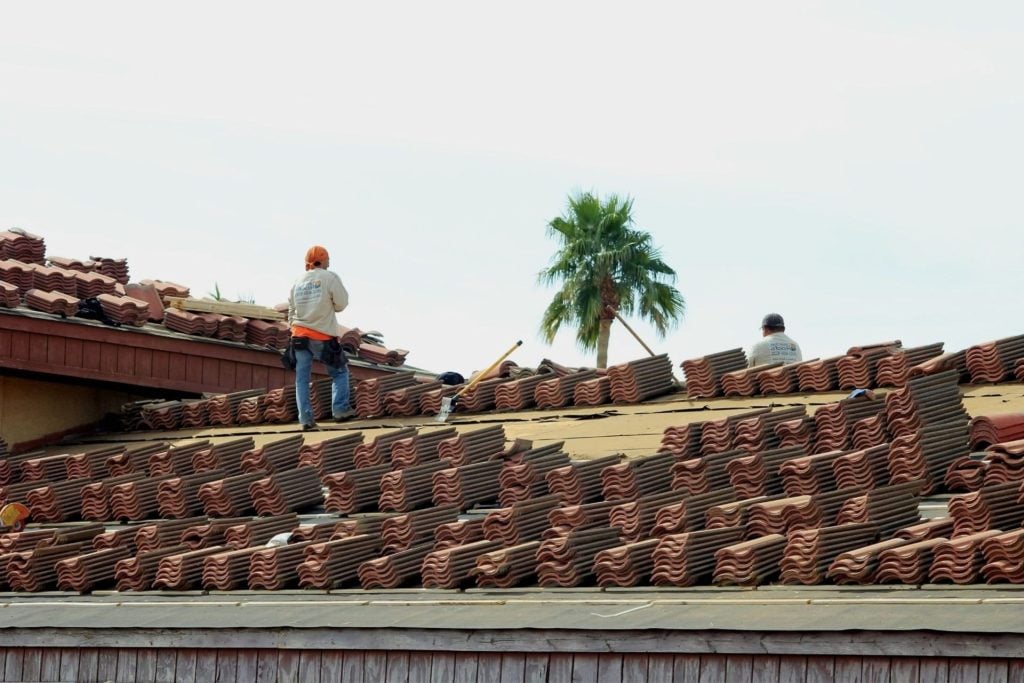
Labor and Installation
Determine if you want to employ professionals or take care of it yourself.
Keep in mind that the required degree of expertise might affect the pricing.
The complexity of the various roofing companies size of the roof installation procedure is another factor that may influence the total cost.
Geographic Location
There is a connection between the place you reside and the situation.
When developing your budget, you should take into account the fact that prices might differ from one place to another.
It is important to think about the climate in your area since this might alter the kinds of materials that are required for a new roof to last.
Roof Condition and Repairs
It is necessary to be aware of the present state of your roofing contractors, too. Existing roofing contractors with problems may need minor repairs before they can be replaced.
If you take care of any essential roof repair right away, it will save you money in the long term.
Choice of Roofing Contractor
Find local, reliable contractors that have a solid reputation in your region and look for those who are licensed.
It is in your best interest to get numerous bids and estimations.
Comparing them enables you to make more educated decisions and keeps you from spending more than you should.
Cost Estimation Methods
One standard method is calculating your roof’s cost as per square foot, hundred square feet, hundred square feet, or meter.
Multiply the area by this rate to get an estimate. Another approach is to get a detailed quote from a roofing company and contractor. They’ll provide a breakdown of labor costs based on your specific needs.
It’s crucial to gather quotes from multiple contractors. This allows you to compare prices and the services they offer. Getting multiple quotes helps you find the best deal and safeguards you from scams or overcharging. It’s an intelligent way to ensure you get a fair price for your roof replacement.
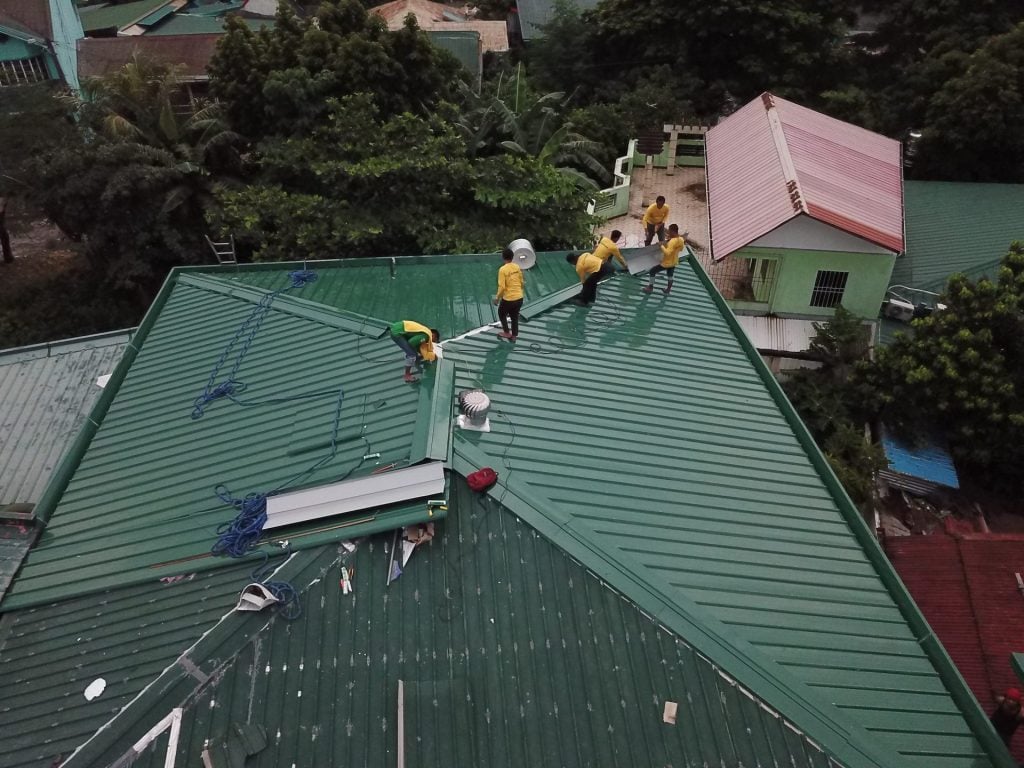
Common Roof Replacement Materials
Asphalt Shingles
Basic asphalt shingles roofing material is budget-friendly and works well with various, most common roofing materials and designs.
They offer decent longevity and are relatively low-maintenance, making them popular.
Metal Roofing
The new metal roof is rigid and energy-efficient, saving you money over time.
Metal roofs work in various climates but consider insulation in extreme temperatures.
Tile Roofing
Tile roofs are beautiful and incredibly durable, often lasting for decades.
They can be more expensive upfront, but their longevity can make them a wise investment.
Wood Shakes and Shingles
Wood roofs have a natural charm and are eco-friendly.
They need regular maintenance and may be susceptible to moisture and pests, so consider upkeep costs.
Budgeting and Financing
Saving up for your roof replacement costs is a smart move. Start setting money aside now so you’re ready when the time comes. Consider creating a dedicated savings fund for home maintenance. Home improvement loans are available if you can’t cover the cost upfront.
These loans are specifically designed for renovation projects like roof replacement. Shop around for competitive interest rates and terms. Check your homeowner’s homeowners insurance policy.
It might cover some or all replacement costs if the damage is due to a covered peril, like a storm or fire. Remember to file a claim promptly for you. Government programs sometimes offer financial assistance for home improvements, especially if you’re in a low-income bracket or live in a disaster-prone area.
Research available programs in your area.
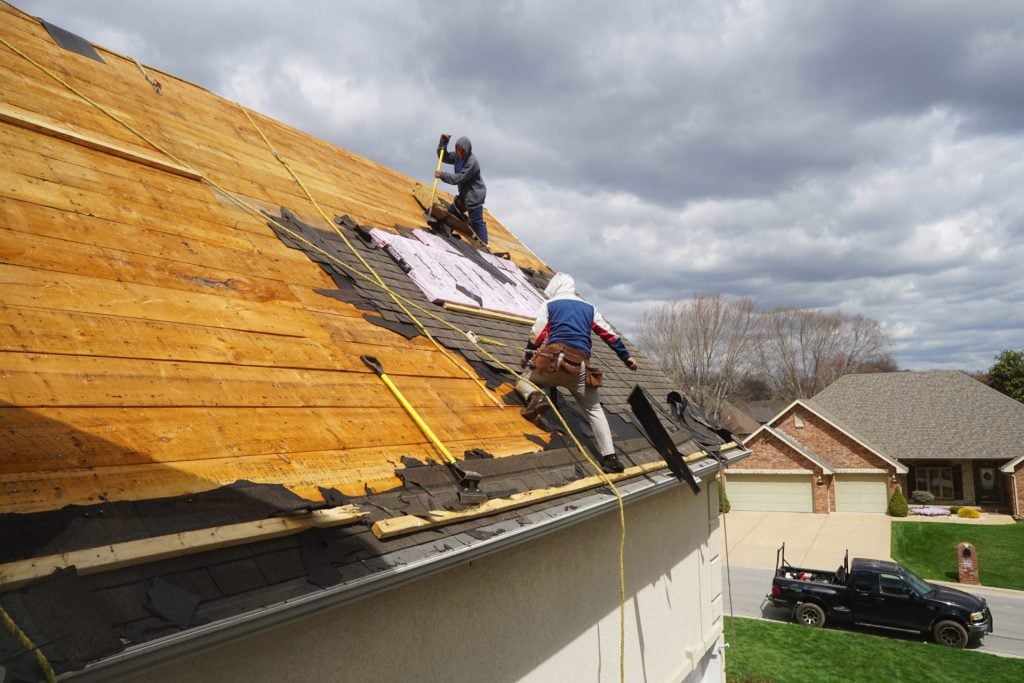
DIY vs. Professional Roof Replacement
The Risks and Benefits of DIY Roof Replacement
Doing it yourself can save money, but it’s not for everyone. Consider your skill level, available time, and the job’s complexity. DIY can be rewarding but involves risks like improper installation or safety hazards.
When to Hire a Professional
Certain situations demand a professional’s expertise. Hiring a pro is safer and more innovative if your roof is large, steep roofs, or has many angles. Pros also ensure your new roof also meets local building codes.
Ensuring Safety During Roof Replacement
Safety is paramount. Whether you go DIY or hire a pro, ensure safety measures are in place. Use proper gear, secure ladders, and be cautious on the top to replace a roof or deck. Pros have experience and training to minimize risks.
The Roof Replacement Process
Preparing for Replacement
Start by checking if you need permits from your local authorities. Sort out any necessary paperwork to ensure a smooth process. Before the roofers arrive, clear your yard and driveway of obstacles. This helps them work efficiently and safely.
Removing the Old Roof
Roofers will remove your old top slate tiles and roofing very carefully and dispose of the materials properly, often in a dumpster. This step cleans the top slate tiles for your new tiles and roofing. After the new roof replacement cost is removed, they’ll inspect the new roof cost and deck cost for any damage or issues that need repair.
Installing the New Roof
Roofers will lay down underlayment and insulation tile roof for roof removal, added protection, and roof replacement cost cost and energy efficiency. This is a full roof replacement material installation where your chosen roofing material is installed with precision and care.
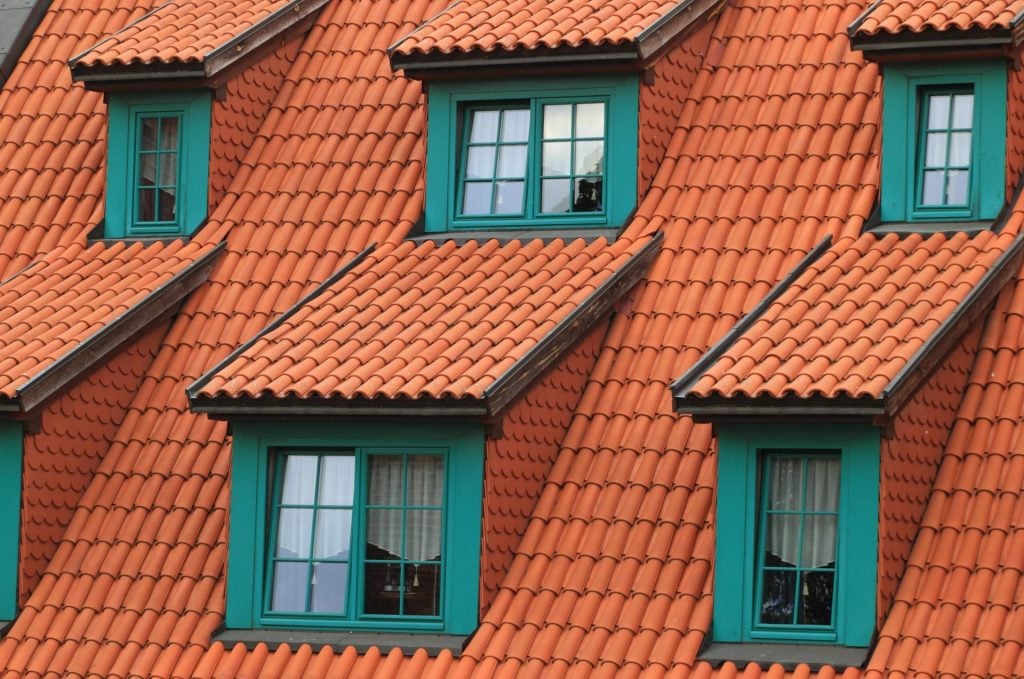
Final Inspections and Cleanup
Inspectors will check the building inspector new roof features and building inspectors’ new roof for quality and safety. Once everything looks good, it’s time for cleanup. Roofers will ensure the new roof costs and the replacement cost of your property’s metal roof are spotless.
Conclusion
Remember, several factors affect copper roofing replacement cost, including the roofing material, roof size, labor costs, location, roof condition, and your choice of contractor.
Understanding these elements is essential for budgeting effectively. Don’t view roof replacement as an expense to save money; consider it an investment in your home’s future. A well-executed replacement ensures your family’s safety and comfort and preserves your property’s value.
It’s a long-term asset shielding you from costly repairs and energy inefficiency. Proactive planning is vital. Regular roof inspections, maintenance, and timely replacements are essential to extend your roof’s lifespan and minimize expenses. Create a budget that accommodates these needs, and don’t delay necessary work.
Your roof is your home’s first line of defense, so taking care of it is an intelligent homeowner’s responsibility.
In conclusion, understanding the factors influencing roof replacement costs, investing in quality roof replacements, and prioritizing roof maintenance are crucial steps toward ensuring the longevity and safety of standard roof replacements that repair your home. So, take the initiative, plan wisely, and make informed decisions about your roofing projects. It’s an investment that pays dividends in the long run.
If you’re looking for a house with the best design, quality materials, and made-to-last roofs, check out Brittany Corporation’s Luxury Properties.
Suggested Read: Timing is Everything: Why Summer Could Be The Best Time To Sell A Property
Suggested Read: 10 Remarkable Italian Architecture in Portofino
Suggested Read: Signs It’s Time To Replace Your Carpet
Suggested Read: Swiss Home: What It Should Feel Like
Suggested Read: Define Swiss Home Interior
To begin, it is important to define power, power, pressure washing cost, and pressure washing.
When we apply these techniques, we subject the object to a strong stream of water. They function similarly to a garden hose or high-powered hose, allowing you to wash away all kinds of grossness from your home.
Why is this even a big deal, you ask? Maintaining a clean exterior is essential. It improves the home’s curb appeal of your home, which is good for everyone who lives around you.
But that’s not the whole story. Preventing costly problems like mold growth and structural damage by keeping the outside clean is a good long-term investment. We’ll discuss how much money you can spend on these cleaning agents.
It’s not something that can be applied universally. The overhead costs are conditional on several variables. To prepare adequately, we will look into those elements in further detail.
How Much Does It Cost To Pressure Wash A House?
There is a considerable range in how much power and pressure washing services may cost. Costs to clean a standard-sized house may range from around P11,400 to P45,600 (labor cost included). Based on several variables, prices may be more or cheaper than stated, so shop around.

Here’s a breakdown of the factors that can influence the cost:
Cleaning expenses will increase proportionately with the amount per square foot of footage of your property.
There may be an increase in price if more time and effort are needed to clean extremely filthy or stained surfaces. Accessibility and location are other important factors that might affect the asking price of a house.
Expect to pay more if you want additional services like mold remediation, gutter cleaning, or sealing. Professional pressure washing companies specializing in power washing services may charge by the hour, square foot, or for a set amount.
Common methods of payment include money order, credit card, and check.
How much does power or pressure washing cost per square foot?
Pressure washing a 2,000-square-foot home may cost anywhere from P32,490 to P51,300, with most companies charging between P15.96 and P25.65 per square footage. It is common for power washing to cost more than pressure washing; however, prices may vary widely depending on the company.
Some businesses have a starting price, like P228 per square foot, and a flat pricing for anything above 500 square feet. You should always call your contractor in advance to find out their pricing. If you’re covering a broad region, you might potentially save money.
Understanding Power and Pressure Washer
What are they?
Pressure washing and power washing are like adult super soakers. Pressure washing uses cold water, whereas power washing requires hot water.
To clean things, both need powerful streams of water.
What’s the difference?
The temperature, of course, has a crucial role. Power washing uses heat, making short work of tough grime buildup like grease and oil. Even when using cold water, the force of a pressure washer is felt. You can apply it to your cleaning needs.
Which one’s for you?
The choice is simple. A driveway smeared with oil is a demanding task that calls for power cleaning. Pressure washing is ideal for routine cleaning of surfaces, including siding and decks.
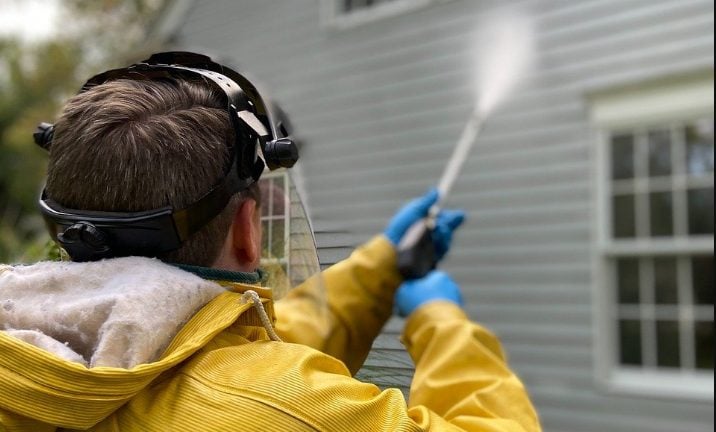
What Is the Difference Between Pressure Washing and Power Washing?
Both pressure washing and power washing make use of high-pressure water sprays, but the temperature of the water stream is what sets them apart.
Power washing uses hot water, whereas pressure washing requires cold water. Power washing is better suited for more intensive cleaning due to the hot water’s enhanced ability to dissolve grime, grease, and oil.
Benefits of Power and Pressure Washing
Envision the outside of your home in its finest form. That’s the job of high-powered and high-pressure cleaners.
Your entire house will be the envy of the neighborhood and of anybody who visits. It’s not all about how it seems. The outside of your property will be safer once you’ve given it this thorough cleaning.
A protective barrier is created, protecting the home from pollutants like dirt and mold. Your house will be more sturdy and survive longer as a result. Traction and safety are both reduced on dirty floors.
Power and pressure washing improve the security of your home. It’s also good for your health since it helps keep allergies and mold at bay. On the contrary, power and water pressure in washing are kind to the environment.
They employ high pressure, which reduces the amount of chemicals required. This is more environmentally friendly.
Factors Influencing the Cost
How Big and What Type:
The price of a cleaning service may increase if your home is very large or elaborate.
It’s also important to consider the siding material since some are more difficult to maintain than others.
Surface Matters:
Cleaning a dirty home might be more expensive since it requires more time and energy.
It will cost less to freshen up if it’s already in decent shape.
Where You Live:
Professional pressure washers services may be more expensive if you live in a remote area.
It is also important to consider accessibility since certain areas may be more expensive to reach if they are difficult.
Extras:
Is mold remediation or gutter and cleaning solution something you’re interested in? Those costs should be included as well.
DIY or Pro:
DIY is less expensive but comes with more risk.
Paying for expert help is more expensive but results in expert work.

How Much Does It Cost to Pressure Wash or Power Wash a House Yourself?
What it will cost you to pressure wash or power wash your home depends on several variables, including the size of your property, the tools you use, and the cleaning supplies you buy.
Whether you buy or rent your house pressure washing equipment and materials, the total cost of a do-it-yourself roof pressure washing and cleaning project might be anywhere from PHP 1,000 to PHP 5,000.
Types of Pressure Washers and Their Costs
There are typically three types of pressure washers:
Electric pressure washers (costing around PHP 5,000 to PHP 15,000).
Gas pressure washers (PHP 15,000 to PHP 50,000+).
Professional-grade (PHP 50,000 to PHP 100,000+).
Prices can vary based on brand and features.
Getting Quotes and Estimates
Start by searching online or asking for recommendations from friends and neighbors to find trustworthy power washers and other pressure-washing companies and experts.
Reach out to several professionals and ask for quotes. They’ll want to know details about your house’s size, location, and the services you need.
Don’t hesitate to ask questions like, “What’s included in the price?” or “Do you have insurance?” Clear communication helps you make an informed choice.
DIY vs. Hiring Professional Service
Doing it Yourself (DIY)
Pros: DIY can save money, and it’s a hands-on experience.
Cons: It’s time-consuming, and you may lack the right equipment.
Potential Risks and Mistakes with DIY
Using the wrong pressure can damage surfaces.
Inadequate safety precautions can lead to accidents.
DIY may not get the same results as pros.
Hiring Experienced Professionals
Pros: Pros have expertise, top-notch equipment, and save you time.
Cons: It can cost more upfront.
Tips for Choosing the Right Service Provider
Check reviews and ask for referrals.
Ensure they’re licensed and insured.
Get detailed quotes and contracts in writing.
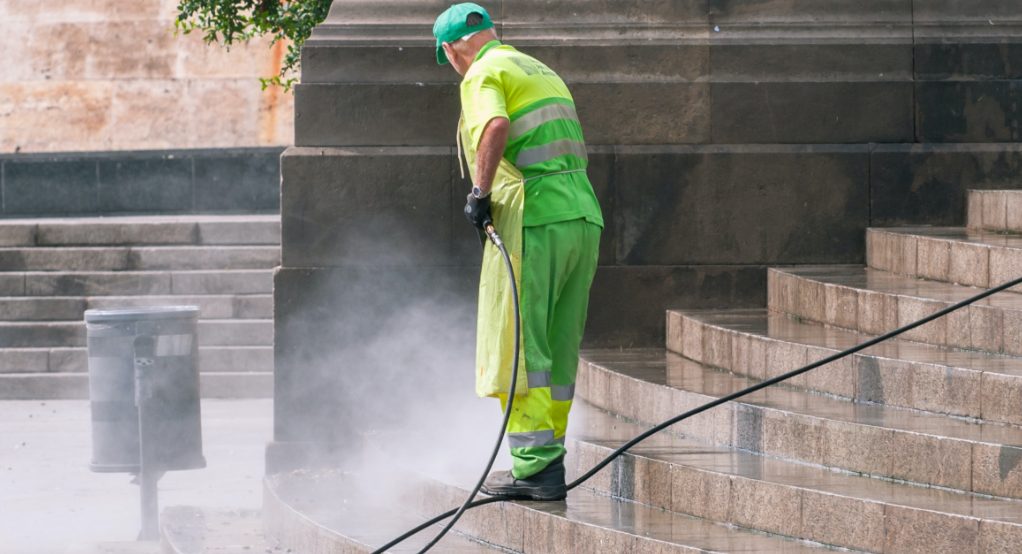
Additional Resources
Check out websites like DIYPressureWashing.com for tips and tricks.
Invest in quality tools and equipment like the best pressure washer, surface cleaners, and detergents. You can find these at local hardware stores or online. Please look for reputable professionals or companies in your area.
You can search for local power and pressure washing services on platforms like Google, Yelp, or local directories. If you want to dig deeper, there are plenty of books and articles on home maintenance and cleaning. Look for titles like “The Complete Guide to Power Washing” or “Home Exterior Maintenance.”
Conclusion
Remember, power and pressure washing aren’t just about looks; they protect your home from damage and keep you healthy.
Plan your budget based on your specific needs and the cost factors we discussed earlier. Decide if DIY or hiring pros is right for you. Don’t wait! A cleaner, well-maintained home exterior looks fantastic and saves you money in the long run.
If you’re looking for clean-looking, less-maintained houses, you might want to check plentiful options from Brittany Corporation properties. So, take action today for a brighter, healthier home. Your home will thank you!
Suggested Read: Importance Of Proper Water Pressure in your Home
Suggested Read: Boost Your Heart Health For World Heart Health Day
Suggested Read: Luxury Items To Give This Holiday Season
Suggested Read: Health Benefits Of Eating Durian Fruit
Are you tired of digging through a chaotic jumble of clothes every morning, desperately searching for that perfect outfit to kickstart your day?
We’ve all been there, but fear not because, in this article, we’re about to embark on a journey that will transform your daily routine and elevate your sense of style.
Imagine stepping into your closet, and at a glance, you can effortlessly locate the outfit that perfectly suits your mood and the occasion. No more tangled hangers, overstuffed shelves, or forgotten pieces buried in the depths of your closet.
This article is your comprehensive guide to conquering the chaos and reclaiming your closet space. We’ll provide you with invaluable tips on how to organize your clothes closet like a pro.
Let’s get started on this journey towards a more organized and stylish you!
Why organize your clothes closet?
A well-organized clothes closet can save you time, money, and stress. It can also help you to take better care of your clothes so they last longer. Here are just a few of the benefits of organizing your clothes closet:
- Save time: When your clothes closet is organized, you’ll be able to find what you’re looking for more easily. This will save you time in the morning when you’re getting dressed, as well as time when you’re looking for a specific outfit for an event or occasion.
- Save money: An organized closet can help you to avoid impulse purchases. When you can easily see all of the clothes you already have, you’re less likely to buy something new that you don’t really need.
- Reduce stress: A cluttered and disorganized closet can be a major source of stress. When your clothes are all over the place, it can be difficult to find what you need and feel confident about your appearance. Organizing your closet can help to reduce stress and improve your overall well-being.
- Take better care of your clothes: When your clothes are stored properly, they’re less likely to get wrinkled, damaged, or stained. An organized closet can help you to keep your clothes in good condition so they last longer.
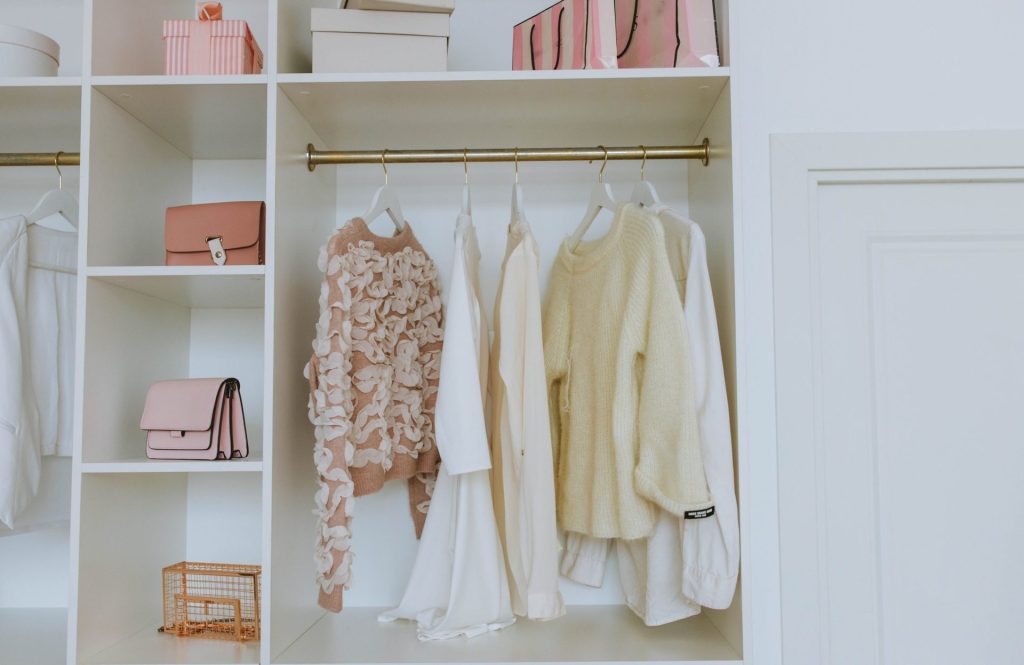
How to Get Started
The first step to organizing your clothes closet is to purge your closet. This means getting rid of anything you don’t wear anymore, doesn’t fit, or is damaged. You can donate, sell, or recycle unwanted clothes.
Once you’ve purged your closet, it’s time to start grouping items together. This will make it easier to find what you’re looking for. For example, group all of your shirts together, all of your pants together, and all of your dresses together.
Next, you’ll need to choose some storage solutions. Various storage solutions, such as hanging closet and drawer organizers, shelf dividers, drawer dividers, and shelf baskets, are available. Choose storage solutions that work best for your closet space and your needs.
Finally, keep your closet clean and tidy. Make a habit of putting your clothes away after you wear them and putting away any other items in walk in closet or that don’t belong in the closet.
Purging your closet
Get rid of anything you don’t wear anymore, doesn’t fit, or is damaged. This includes clothes that are too small, too big, out of style, or simply don’t flatter you.
Here are some specific items to consider getting rid of:
- Clothes that you haven’t worn in the past year
- Clothes that are stained, ripped, or damaged
- Clothes that are too small or too big
- Clothes that are out of style
- Clothes that you don’t feel confident in
- How to get rid of unwanted clothes
Once you’ve decided what clothes to get rid of, there are a few different ways to do it. You can donate them, sell them, or recycle them.
- Donating: Donating unwanted clothes is a great way to give back to your community and reduce waste. There are many different organizations that accept donations of clothing, such as Goodwill, Salvation Army, and the American Red Cross.
- Selling: If you have unwanted clothes that are in good condition, you can sell them online or at a consignment shop. This is a great way to make some extra money and declutter your closet at the same time.
- Recycling: If you have unwanted clothes that are damaged or can’t be donated, you can recycle them. Many clothing retailers offer textile recycling programs. You can also check with your local municipality to see if they have a textile recycling program.
Tips for purging your closet
Here are a few tips for purging your closet:
- Start by taking everything out of your closet. This will help you see how many clothes you have and make it easier to decide what to get rid of.
- Go through your clothes one item at a time. Ask yourself if you’ve worn the item in the past year and if it still fits and flatters you. If the answer is no, get rid of it.
- Don’t be afraid to get rid of sentimental items. It’s okay to keep a few sentimental items but don’t let them take over your closet. If you have a lot of sentimental items, consider taking photos of them before getting rid of them.
- Make it easy to donate or sell your unwanted clothes. Set up a box or bin for clothes that you’re getting rid of. This will make it easy to donate or sell them later on.
Purging your closet can be a daunting task, but it’s worth it in the end. A well-organized closet will save you time, money, and stress. It will also help you to take better care of your clothes so they last longer.

15 Best Closet Organization Ideas to Maximize Space and Style
Transforming your closet into an organized haven that maximizes both space and style is not only a practical endeavor but also an artistic one.
In this guide, let us teach you actionable steps and expert tips for organizing clothes closet tips and turning your chaotic wardrobe into a sanctuary of order and elegance.
1. Use Drawers and Drawer Inserts
Keep small items like socks, underwear, and jewelry organized with drawer inserts. It’s a practical way to maintain order and prevent items from getting lost.
2. Add a Clothing Rack to the Corner of Your Room
Maximize your shoe storage space by adding a clothing rack to the corner of tidy closet in your room.
This closet system is a great way to display your favorite pieces and free up closet space. Plus, it adds a stylish touch to your room.
3. Store Belts in Drawers
Keep your belts organized and easily accessible by storing them in storage boxes in drawers.
This simple trick prevents them from getting tangled and saves you time when you’re getting ready.
4. Allocate Hanging Space for Long and Short Items
Optimize your closet’s hanging space by organizing it strategically.
Reserve one section newly organized closet for long items like dresses and coats and another for shorter pieces like blouses and jackets. This makes it easier to find what you need.
5. Put a Dresser Below Your Hanging Items
Make the most of your closet’s vertical space by placing a dresser beneath your hanging items.
This provides additional storage space for folded clothes and keeps everything within reach.
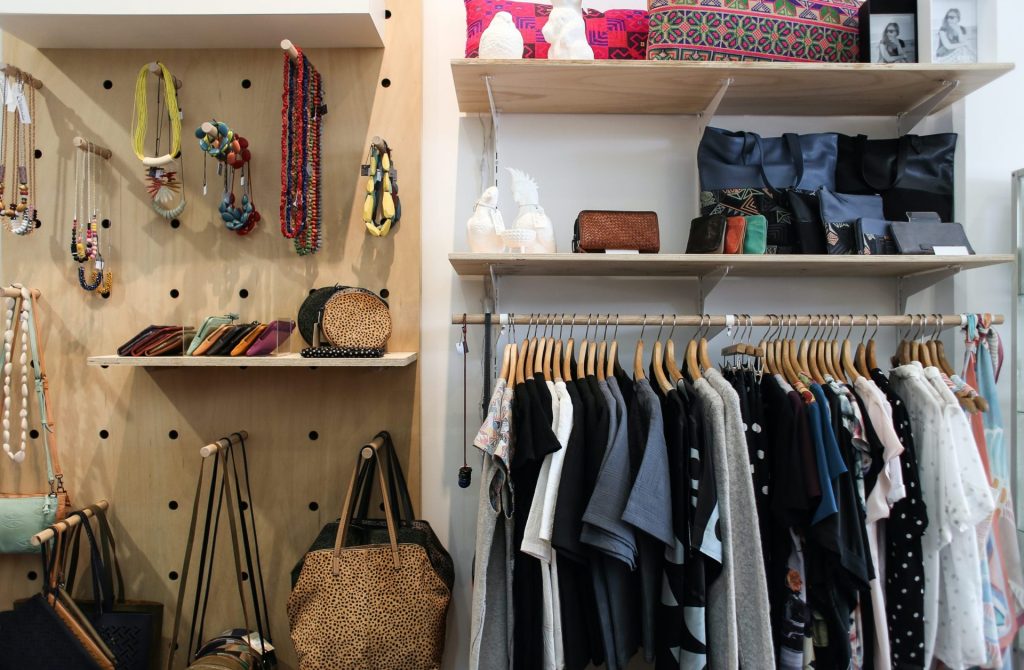
6. Utilize Clothing Racks
Install clothing racks on the inside of your closet doors or walls to hang accessories like scarves t t-shirts, ties, and hats. This keeps them visible and neatly organized.
7. Set aside sentimental clothing
Designate a drawer space or special section of your closet for sentimental clothing.
Whether it’s your wedding dress or a cherished heirloom, keep these items separate to save drawer space and preserve their significance.
8. Invest in good quality hangers
Upgrade your hangers to sturdy, non-slip options like wooden hangers. They’ll keep your clothes in great shape and create a uniform look in more hanging space in your closet.
9. Find a home for each handbag
Give your handbags the respect they deserve by storing them on shelves or hooks.
This not only keeps them in pristine condition but also adds extra space and a touch of luxury to your closet.
10. Prioritize Placement
Place frequently worn items at eye level for easy access. Reserve the lower or top shelf for less-used items, keeping the daily essentials within arm’s reach.
11. Reserve space for ‘ready-to-wear’ clothing
Designate a section of your closet for “ready-to-wear” outfits. This is where you can just hang clothes in your go-to combinations, making mornings a breeze.
12. Put your wardrobe on display for easy access
Consider open shelving or glass-front cabinets to display your favorite shoes, bags, or hair accessories. This not only adds a stylish flair and extra storage space but also makes it easy to see and grab what you need.
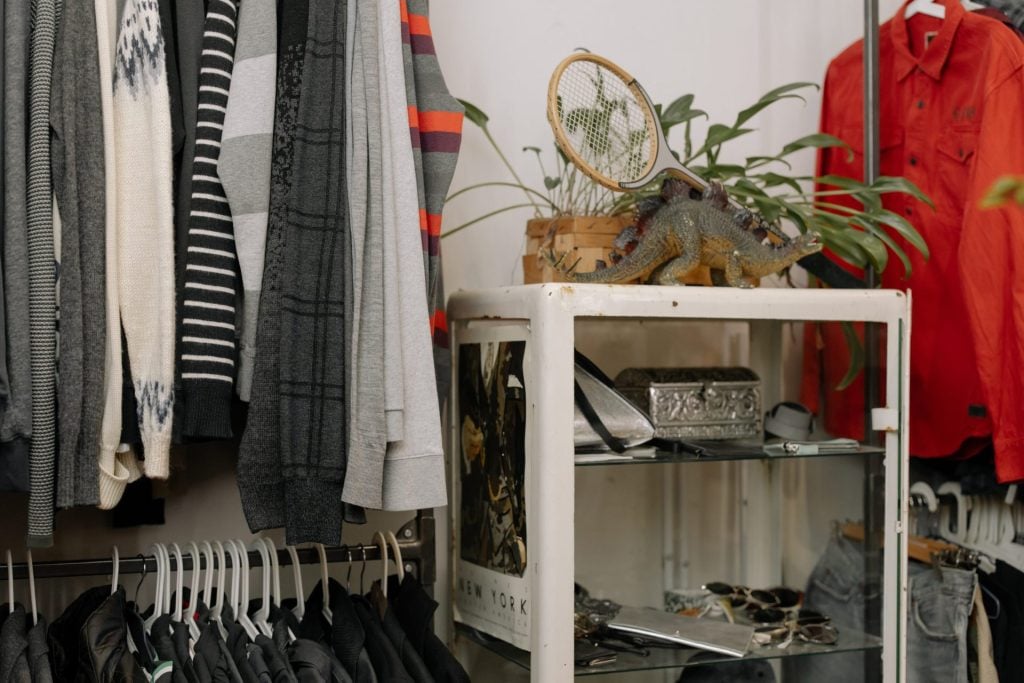
13. Pack away seasonal clothes and accessories
When the seasons change, pack away the winter clothes and bulky coats, and accessories you won’t be needing for a while. This will free up space in your closet and make it easier to find the items you’re looking for.
14. Create harmony with color
Color-coordinate your clothes and accessories to create a visually appealing and cohesive closet. This can be done by hanging clothes of the same color together or by storing items in clear bins or baskets that are organized by color.
15. Add decor to wall space and shelves
If you have empty wall space or shelves in your closet, use them to add some decorative touches. This could include hanging framed photos, displaying plants or flowers, or placing decorative baskets or boxes on shelves.
Conclusion
Organizing your clothes closet can seem like a daunting task, but it’s definitely worth it in the end. A well-organized closet will save you time, money, and stress. It will also help you to take better care of your clothes so they last longer.
By following the tips in this article, you can create a clothes closet that is both functional and stylish. And, who knows? You may even be inspired to declutter other areas of your home, creating a more serene and organized living space.
Imagine coming home to your luxury Swiss-inspired home at Crosswinds Tagaytay, surrounded by the breathtaking natural beauty of the area. After a long day, you can relax and unwind in your own private sanctuary, knowing that everything is in its place.
Your clothes closet is no exception. Thanks to the tips in this article, you have created a well-organized and stylish closet that makes it easy to get dressed every morning. You have also taken the time to add some personal touches to your closet, such as hanging framed photos and displaying plants.
Your organized closet is just one of the many things you love about your home at Crosswinds Tagaytay. You are grateful for the opportunity to live in such a beautiful and inspiring place.
Suggested Read: Best Celebrity Walk-In Closets in the Philippines
Suggested Read: How To Design A Closet in your Luxury Home
Suggested Read: The Collector’s Edition of Dream Closets
Suggested Read: Smart Ways To Organize A Wardrobe
Suggested Read: Clutter Clearing Plan For The New Year
Siding installation cost can vary greatly depending on a variety of factors. This guide will provide detailed information on the cost of siding installation.
Siding installation is a key home improvement project that rejuvenates your home’s exterior and provides vital protection against environmental factors. The cost of such an undertaking varies greatly, influenced by the siding material, the extent of labor required, and various additional elements.
Homeowners typically spend anywhere between $5,000 and $20,000, and in some luxury cases, even more. The cost per square foot generally lies in the ballpark of $4 to $15, including materials and labor. This comprehensive guide explores the different facets contributing to the overall siding installation cost.
Comprehensive Breakdown of Costs by Siding Installation Material
Different materials offer a variety of pros and cons, affecting the overall appearance, durability, and required maintenance, not to mention the overall cost.
Wood Siding Installation
Wood siding has been a perennial favorite for its timeless beauty and low environmental impact. However, it does require meticulous upkeep and has vulnerabilities to environmental factors.
- Average Cost: $1 to $4.50 per sq ft
- Pros:
- Classic aesthetic appeal
- Environmentally friendly
- Highly durable if maintained well
- Cons:
- Requires consistent maintenance
- Susceptible to environmental damage like water, rot, and insects
Vinyl Siding Installation
Vinyl siding installation is commonly chosen for its low maintenance and affordability, although it doesn’t always stand up well to harsh weather and can look less natural than other materials.
- Average Cost: $4 to $7 per sq ft
- Pros:
- Affordable
- Low maintenance
- Multiple color options
- Cons:
- Less resilience to severe weather
- Artificial appearance
Aluminum Siding Installation
Aluminum siding installation offers a durable and corrosion-resistant alternative but can suffer from dents and fading.
- Average Cost: $5 to $9 per sq ft
- Pros:
- Lightweight
- Resistant to corrosion
- Durable
- Cons:
- Prone to dents
- Can fade over time
Steel Siding
Steel siding is an excellent option for durability and safety but comes at a premium initial cost.
- Average Cost: $6 to $10 per sq ft
- Pros:
- Extremely durable
Fire-resistant
Eco-friendly
- Extremely durable
- Cons:
- Higher initial cost
- Heavier material requiring more labor
Fiber Cement Siding
Fiber cement siding offers a combination of aesthetic flexibility and durability but can be costly and challenging to install.
- Average Cost: $8 to $12 per sq ft
- Pros:
- Mimics the look of natural materials
- Resistant to fire and pests
- Long lifespan
- Cons:
- Expensive to install
- Heavy, requiring specialized installation
Stucco
Stucco is known for its durability and unique texture but might not be suitable for areas with high humidity or rainfall.
- Average Cost: $7 to $13 per sq ft
- Pros:
- Long-lasting
- Energy-efficient
- Unique texture
- Cons:
- Complicated installation
- Not ideal for wet climates
Brick
Brick siding offers a classic look and excellent durability but can be expensive to install.
- Average Cost: $10 to $18 per sq ft
- Pros:
- Classic look
- Extremely durable
- Low maintenance
- Cons:
- High installation cost
- Requires skilled installation
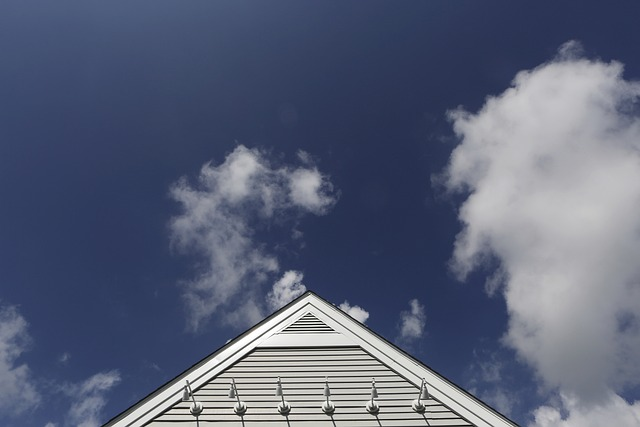
Stone
Stone siding provides a luxurious appearance and extreme durability but is the most expensive option available.
- Average Cost: $15 to $30 per sq ft
- Pros:
- Luxurious look
- High durability
- Value addition to the property
- Cons:
- Most expensive option
- Heavy, requiring specialized installation
Additional Factors that Influence Cost
Beyond the type of siding material, there are several other elements that can significantly impact the overall cost of siding installation.
Labor Costs
The cost of labor for siding installation can vary depending on the location and complexity of the job. Labor charges can range from $2 to $6 per square foot. Factors such as the type of siding material, accessibility of the work area, and the intricacy of the project can influence the labor cost.
Removal of Old Siding Installation
Before installing new siding, the existing siding must be removed. The cost of removing old siding can vary depending on factors such as the type of siding, the size of the house, and the condition of the existing siding. On average, the cost of removing old siding can add an extra $1,000 to $3,000 to the overall project cost.
Permits and Inspections
In some areas, obtaining permits for siding installation may be required by local regulations. The cost of permits can vary, typically ranging from $100 to $500. It is important to check with the local authorities to determine your project’s specific permit requirements and associated costs.
Complexity and Special Requirements
The complexity of the project and any special requirements can also impact the overall cost of siding installation. Unique architectural features, such as curved walls or intricate designs, may require specialized labor or equipment, which can increase the project’s cost. Additionally, multi-story homes may require additional safety measures and equipment, further contributing to the overall cost.
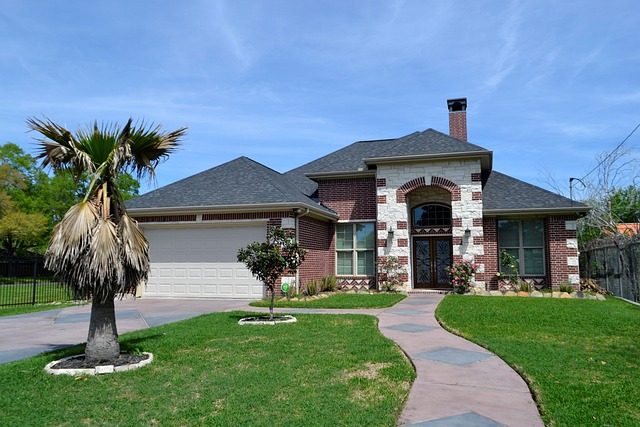
DIY vs. Professional Siding Installation: A Comparison
Deciding between DIY and professional installation for your siding project is a crucial step that has significant implications on cost, time, and the quality of the final result.
DIY Installation
Embarking on a do-it-yourself (DIY) project can be a great way to save on costs and personalize your creations. However, it’s important to keep in mind that DIY endeavors can often be time-consuming and may lead to errors if you lack the necessary skills or expertise. Taking the time to adequately develop your skills and knowledge can help ensure a successful and satisfying DIY experience.
Pros:
- Significant cost savings
- Personal satisfaction
Cons:
- Time-intensive
- Risk of errors
Professional Siding Installation
When it comes to hiring professionals, it is true that it may cost more initially. However, the investment in their expertise and experience guarantees a quicker and more reliable outcome. By entrusting your project to professionals, you can ensure that every aspect is handled with meticulous attention to detail, resulting in a successful and efficient outcome.
Pros:
- Speed and efficiency
- Usually comes with a warranty
Cons:
- Higher costs
- Less personal involvement
Money-Saving Tips for Siding Installation
As a homeowner, finding ways to save money without compromising on quality is crucial, particularly when it comes to substantial investments like house siding installation. This section aims to provide you with practical strategies to keep your costs in check while ensuring the best outcomes for your siding project.
Seasonal Discounts
Contractors might offer lower rates during the off-season, which typically occurs in late fall or winter when demand for their services is lower. During this time, contractors may be more available and can offer discounted rates to attract more clients. This can be a great opportunity for homeowners or businesses to save money on their projects while still receiving high-quality work.
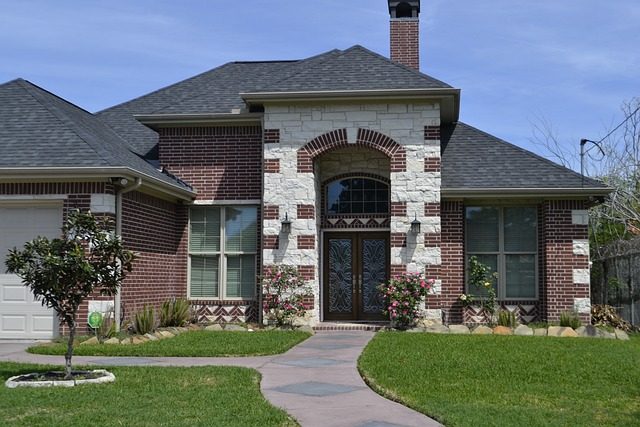
Bulk Purchases
Ordering siding materials in bulk can sometimes secure a discount. Customers can take advantage of reduced prices by purchasing a larger quantity of materials, such as lumber, concrete, or fixtures. This is because suppliers often offer volume discounts to incentivize buyers to purchase larger quantities. Not only can this help save money, but it can also ensure enough materials are available to complete the project without any delays or shortages.
Consider Different Material Options
While choosing the most luxurious or visually appealing siding material might be tempting, consider your needs and budget. There’s no point in opting for a high-end option like stone if it’s going to strain your finances. Different materials offer different advantages in terms of cost, durability, and maintenance needs, so be sure to weigh these factors before making a decision.
Comparing Quotes
Don’t settle for the first quote you receive. It’s worth the effort to reach out to multiple contractors and compare their prices and services. This allows you to ensure you’re getting the best value for your money. Make sure to ask for a detailed breakdown of costs so you understand what you’re paying for.
Reusing Existing Materials
In some cases, it may be possible to reuse your existing siding material, especially if it’s in good condition. This can significantly reduce the cost of materials. However, you should consult a professional to determine whether this is feasible for your situation.
Final Words
Siding replacement is not just a cosmetic upgrade. It’s a significant investment in your home’s longevity and its potential resale value. The long-term benefits, from aesthetic enhancement to better environmental protection, often justify the initial expenditure. The total cost is influenced by a myriad of factors, including the material type, labor charges, and additional features. By fully understanding these variables, you can make a well-informed decision that balances your budget and aesthetic preferences.
Ready to Elevate Your Living Experience?
Choose Brittany Corporation, the leader in luxury real estate in the Philippines. Our unique and upscale developments offer more than just a home – they offer a lifestyle. Don’t settle for the ordinary. Reach out to us today, and let’s start building your dream home where luxury is not an option but a standard.
Suggested Read: Operating Budget: Everything You Need To Know
Suggested Read: How To Make Your Own Coffee Corner At Home
Suggested Read: Pros And Cons of a Condo For Summer Vacation
Suggested Read: A Comprehensive Guide Into Gravel Driveways
Suggested Read: Smart Fridges For Your Luxury Kitchen
Gravel driveways are a popular and cost-effective option for homeowners looking to improve their property. Learn about the associated costs here.
Gravel driveways have been popular for homeowners and business owners for years. Their rustic appeal, affordability, and ease of installation make them an excellent option for those looking to spruce up their property entrance. While these driveways offer several benefits, calculating the exact cost involves understanding various factors, including the gravel quality, the area’s size, and labor charges. This comprehensive guide aims to provide detailed insights into gravel driveway cost, helping you plan your budget effectively.
Average Costs
The average cost of a gravel driveway can vary widely, depending on a range of factors. This section dives into what you can expect with the costs.
Nationwide Average
Nationwide, the average cost for a gravel driveway falls between $600 to $2,000. However, it’s essential to note that this price can fluctuate dramatically based on several elements. On a general scale, the cost per square foot tends to range from $2 to $4.
Low-End Cost
For those on a tight budget, installing a simple and new gravel driveway with basic crushed stone can cost as little as $300 to $600, not including labor. These figures generally apply to driveways that are smaller in size and don’t require extensive groundwork.
High-End Cost
On the high end, you could be looking at costs upwards of $4,000 or more. This would involve a larger area, high-quality gravel, and potentially additional features like drainage systems, a stabilizing grid, or premium edging materials. Labor costs can also contribute significantly to higher-end expenses.
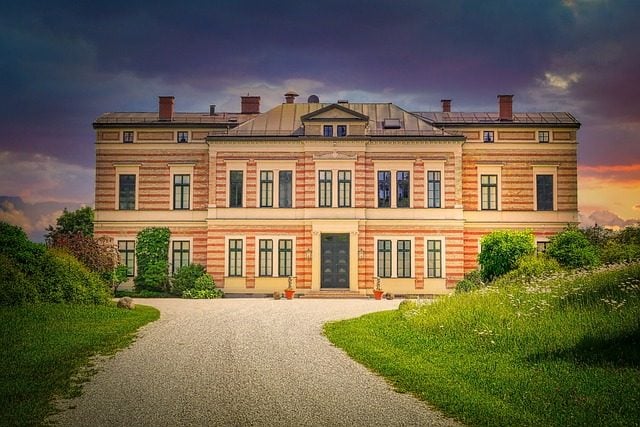
Factors Affecting Cost
Below are some key factors that can influence the cost of installing a gravel driveway. Understanding these elements can assist you in making an informed decision and optimizing your budget.
- Size of Driveway: The most straightforward factor affecting the cost is the size of the driveway. Larger driveways will require more material and labor, thereby increasing the overall cost.
- Type of Gravel: The type of gravel you select can also make a noticeable difference. Standard crushed stone gravel is generally cheaper, but if you’re looking for something more aesthetically pleasing, like pea gravel or marble chips, be prepared to pay extra.
- Labor Costs: Labor can be another significant portion of the cost, especially if your land needs to be graded before the gravel is laid. Labor costs can range anywhere from $30 to $50 per hour per worker.
- Geographical Location: Regional differences can contribute to varying costs. Labor and materials may cost more in urban or high-cost-of-living areas compared to rural locations.
Additional Costs
In addition to the primary costs associated with a gravel driveway, several potential additional costs may be contemplated. These extra expenses can arise from various sources and can significantly affect your overall budget.
- Drainage System: One often overlooked factor is the drainage system. Poor drainage can accumulate water and erode the gravel over time. Installing a proper drainage system can add anywhere from $200 to $800 to your total costs.
- Stabilizing Grid: A stabilizing grid may be recommended for driveways that are either very long or situated on an incline. This feature can cost an extra $0.50 to $1 per square foot.
- Edging: Edging not only serves an aesthetic purpose but also helps contain the gravel, reducing the frequency of maintenance. Edging materials can range from inexpensive plastic to premium steel, costing from $2 to $4 per linear foot.
- Delivery Fee: Gravel usually has to be delivered to your property. Depending on the distance from the source, delivery fees can range from $50 to $200.
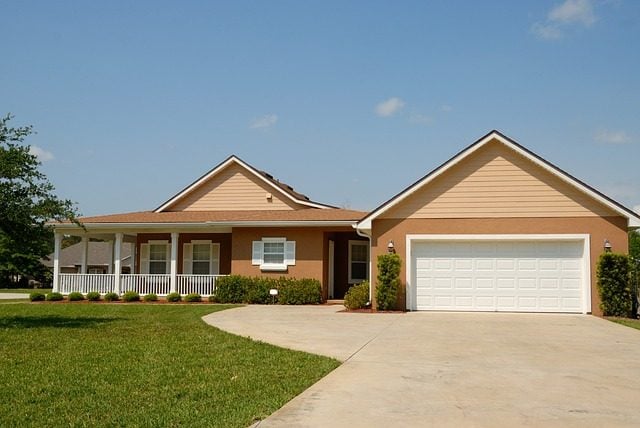
Should You DIY or Hire a Professional?
Deciding between a DIY project or hiring a professional for your gravel driveway installation can be challenging. Both options have their own pros and cons, which can significantly affect your budget, time, and the project’s overall quality.
DIY
If you’re comfortable with heavy lifting and have access to necessary equipment like a wheelbarrow and a shovel, you might opt for a DIY project. Going this route could save you a significant amount in labor costs. Taking on the challenge yourself can be a rewarding experience, allowing you to showcase your skills and creativity. Just make sure to plan your project carefully, considering factors like material selection, time commitment, and any potential challenges you may face along the way.
Hiring a Professional
Hiring a gravel driveway contractor might be the best choice if you’re looking for a polished finish or if your driveway requires complicated grading or drainage solutions. They have the expertise and experience to handle complex installations and can ensure a high-quality outcome. Professionals can also provide valuable insights and suggestions based on their knowledge of the latest industry trends and best practices. By entrusting your project to a skilled professional, you can have peace of mind knowing that your driveway will be expertly constructed, meeting all your specific requirements.
How to Save Money
Mindful budgeting can lead to significant savings when planning for a gravel driveway. This section delves into useful strategies and tips that can help you minimize costs while ensuring a quality driveway project.
Bulk Purchase
When making a bulk purchase, it’s important to consider the potential benefits suppliers often offer in the form of discounts for larger orders. By taking advantage of these discounts, you can save money and have the advantage of having a sufficient stock of supplies. This is especially beneficial if you have the necessary storage space to accommodate the bulk purchase. It’s a smart and economical choice that can help you stay well-prepared and save money in the long run.
Off-Season Installation
Timing is everything when it comes to installing your gravel driveway. By opting for an off-season installation, you may be able to enjoy significant savings. Labor is often cheaper during the contractor’s off-season due to lower demand. This means you can take advantage of reduced labor costs while ensuring your driveway is professionally installed. It’s a win-win situation where you can save money without compromising on the quality of workmanship.
Recycled Materials
In today’s eco-conscious world, using recycled or reclaimed driveway materials is a responsible choice and a great way to save money. When it comes to your driveway, using recycled concrete or asphalt driveway can be a cost-effective alternative. Not only do these materials help reduce waste and conserve natural resources, but they also offer durability and functionality. By opting for recycled materials, you can contribute to a greener environment while enjoying the financial benefits of a budget-friendly solution.
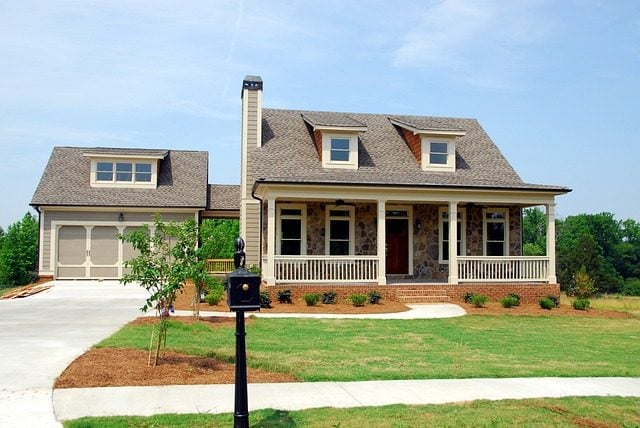
FAQs
What is the most affordable type of gravel for a driveway?
When it comes to cost-effectiveness, basic crushed stone emerges as the top choice, with prices ranging between $2 to $4 per square foot. Its affordability makes it a popular option for homeowners looking to create a functional and budget-friendly driveway.
How often should a gravel driveway be replenished to maintain its longevity?
To ensure durability and preserve its appearance, it is generally recommended to replenish driveway gravel every one to two years. This periodic maintenance helps prevent erosion, maintain a smooth surface, and extend the driveway’s lifespan.
Is a gravel driveway a wise investment for homeowners?
While a gravel driveway may require more frequent maintenance compared to other options, it offers significant cost savings during installation. Additionally, depending on the type of gravel used, it can still provide a high-end aesthetic appeal. Homeowners seeking a balance between affordability and visual appeal often find gravel driveways to be a great investment.
Can I take on the installation of a gravel driveway as a DIY project?
Absolutely! With basic skills and access to necessary equipment, installing a gravel driveway can be a manageable do-it-yourself project. This allows homeowners to save on labor costs and provides a sense of accomplishment and customization to suit individual preferences.
What are the alternatives to consider when opting against a gravel driveway?
Asphalt, concrete, and pavers are worth exploring for those looking for alternatives. However, it is important to note that these alternatives usually come with a higher initial cost and may require professional installation. Homeowners should carefully weigh each option’s pros and cons before deciding.
Ready to elevate your living experience? Choose Brittany Corporation, the leader in luxury real estate in the Philippines. With our unique and upscale developments, we offer you not just a home but a lifestyle. Contact us today, and let’s make your dream home a reality. Brittany Corporation – where luxury is a standard.
Suggested Read: Operating Budget: Everything You Need To Know
Suggested Read: Driveway Styles For Your Luxury Home
Suggested Read: Zen Gardens: Beauty in the Ordinary
Suggested Read: Driveway Maintenance Tips
Suggested Read: Driveway Trends of 2022
An auction is one of the most popular methods used for buying and selling goods. Learn about the 20 fundamental terms used in auctions here.
Mastering the language of auctions is akin to learning a new dialect. It’s filled with unique terms and jargon that can seem foreign to a newcomer. However, once you’ve grasped these terms, you’re on your way to navigating the world of auctions like an experienced bidder. Let’s dive into a comprehensive list of auction terms that every rookie should familiarize themselves with.
1. Auctioneer
The auctioneer is the person who conducts the auction. They guide the proceedings, announce the lots, stimulate the bids, and finally, hit the hammer to signal the acceptance of the highest bid. Understanding the auctioneer’s rhythm and style can give you an edge in your bidding strategy.
2. Absentee Bid
In the event that potential buyers cannot be physically present at the auction, they can place what is known as an absentee bid. This is an advanced bid where the highest bidder specifies their maximum bid limit for a particular lot. The auction house bids on their behalf, ensuring they get the item for the lowest possible price, up to their set limit.
3. Hammer Price
The hammer price, a term derived from the decisive fall of the auctioneer’s hammer, represents the ultimate bid price that the auctioneer deems acceptable for a specific lot. This significant moment marks the conclusion of the sale, solidifying the transaction as final and binding. With the authoritative strike of the hammer, the fate of the lot is sealed, leaving both the auctioneer and bidder with a sense of closure and anticipation for the next exciting auction event.
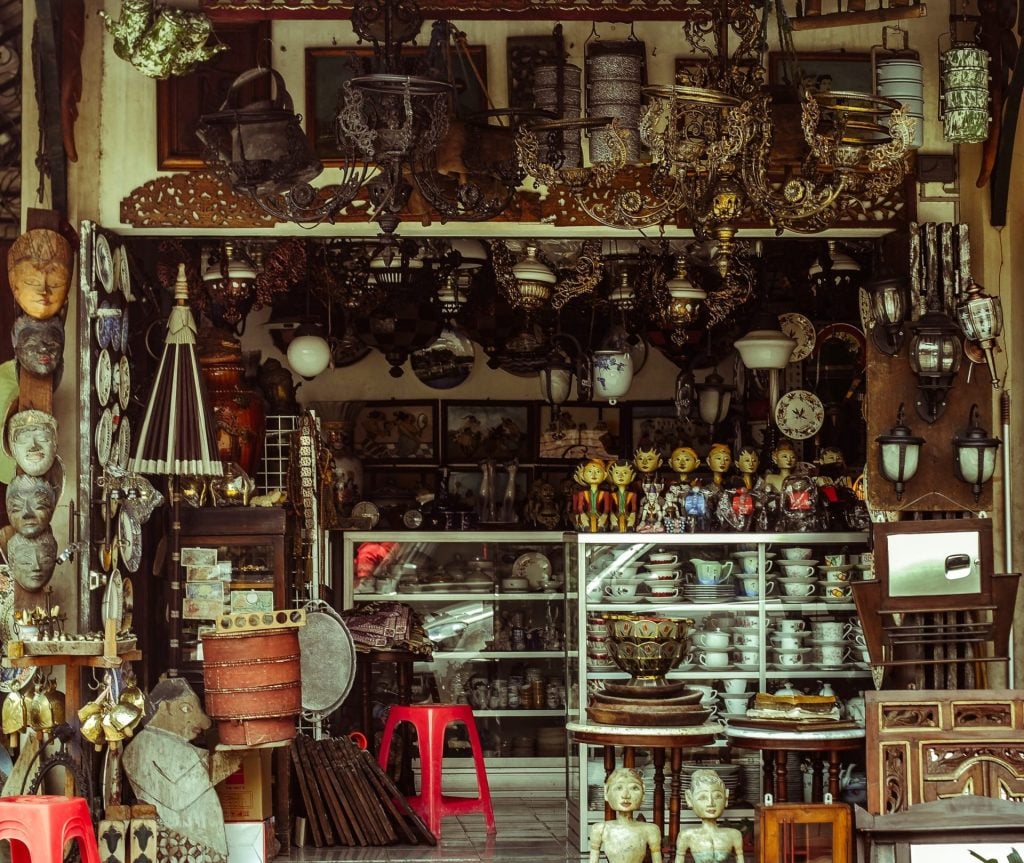
4. Buyer’s Premium
The buyer’s premium, an additional fee charged by the auction house to the winning bid, plays a significant role in the final price paid by the buyer. It is calculated as a percentage of the hammer price, typically ranging from 10% to 25%. This fee helps cover the costs associated with organizing and conducting the auction, such as marketing, cataloging, and administrative expenses.
5. Reserve Price
The reserve price, or the confidential minimum bid, is the lowest amount a seller is willing to accept for a lot in an auction. It serves as a safeguard for the seller, ensuring that they do not have to sell the item for less than its perceived value. If the bidding does not reach or exceed the reserve price, the auctioneer reserves the right to retain the item and not proceed with its auction sale. This mechanism allows sellers to maintain control over the transaction and ensures that the item is sold at a price that meets their expectations.
6. Lot
In the context of an auction, a lot can be defined as either a single item or a collection of items that are bundled together and sold as a single unit. This allows bidders to acquire multiple items at once, often with a unique identification number assigned to each lot for easy tracking and reference throughout the auction process.
7. Catalogue
A catalogue is a comprehensive listing of all the lots available in the auction. Each entry in the catalogue includes a detailed description of the lot, high-quality images, and an estimated price range that the lot is expected to fetch. Catalogues can serve as a valuable guide, helping bidders plan their strategy.
8. Provenance
Provenance refers to the history of a lot’s ownership and origin. The provenance of an item can greatly influence its appeal and value, especially in the case of artworks, antiques, and collectables. Bidders often look for well-documented provenance as a guarantee of authenticity and value.
9. Estimate
An estimate is a price range within which a lot is expected to sell at auction. Auction houses provide these estimates based on a variety of factors such as condition, rarity, quality, and current market trends. It provides a useful guide for bidders but does not guarantee the final sale price.

10. Paddle
In a live auction setting, registered bidders are typically provided with a paddle featuring a distinct number. This paddle serves as a visual identifier that enables the auctioneer to easily recognize each bidder. When a bidder wishes to make a bid, they signal the auctioneer by raising their paddle deliberately and visibly. This action grabs the auctioneer’s attention and alerts other participants to the bidder’s intention to bid.
11. Conditions of Sale
The conditions of sale refer to the legal terms under which the auction house conducts the sale, including the regulations affecting auction selling. These might include buyer’s premiums, payment terms, guarantees of authenticity, shipping arrangements, and return policies. Before bidding in an auction, it’s wise to thoroughly familiarize oneself with these conditions.
12. Appraisal
An appraisal is a formal assessment of an item’s value, usually conducted by a specialist in the field. This valuation takes into account the item’s condition, rarity, quality, and market demand. It provides a basis for setting reserve prices and estimates.
13. White Glove Sale
In the world of auctions, a ‘white glove sale’ is an event in which every single lot is sold. It’s a signal of extraordinary success for the auction house and satisfaction for the sellers, who know that their items have found eager prospective buyers.
14. Chandelier Bid
Chandelier bidding is a technique used by auctioneers to stimulate bidding. These are essentially fictitious bids that the auctioneer uses to drive up the price of a lot, especially when the bidding is slow to start.
15. Conditions Report
A conditions report is a detailed assessment of an item’s current state, including any damages or restorations. It provides potential buyers with a clear understanding of what they’re bidding on, helping them make informed decisions.

16. Auction Block
The auction block, also known as the sales platform, is the physical location where auctions take place. It serves as the central stage where bidders gather to participate in the bidding process and where the auctioneer presents the items or lots up for sale. With its historical significance and vibrant atmosphere, the auction block embodies the excitement and anticipation that comes with the art of auctioneering.
17. Knocked Down
The term ‘knocked down’ is commonly used in the auction world to describe the exciting moment when the auctioneer, with a distinct and authoritative motion, brings down the hammer to signal the finalization of the sale of a lot. It signifies that the item has found its new owner, having been successfully ‘knocked down’ to the winning bidder amidst the anticipation and buzz of the auction floor.
18. Opening Bid
The opening bid, which is the initial bid placed on a specific lot during an absolute auction, plays a crucial role in initiating the bidding process. It is strategically set to encourage and stimulate healthy competition among potential bidders, ultimately driving up the final price of the item being auctioned.
19. Bid Increment
A bid increment is a predetermined amount by which the auctioneer increases the bidding level after each bid. This incremental increase ensures a fair and steady pace in the bidding process, allowing participants to engage in a competitive yet controlled manner.
20. Withdrawn Lot
A withdrawn lot refers to an item that was initially part of the auction but was removed or ‘withdrawn’ before the auction took place. Various reasons, such as title disputes, doubts about authenticity, or the seller choosing not to sell anymore, can lead to a lot being withdrawn.
Final Thoughts
Understanding these terms is the first step toward feeling confident and informed at an auction, whether physical or online auctions. Remember, every expert was once a beginner. With time, patience, and experience, you’ll find yourself well-versed in the art of auctions.
Feeling more confident with your newfound auction knowledge? Why not put it to good use with Brittany Corporation? As the premier name in luxury real estate in the Philippines, we offer a variety of properties that could be the perfect fit for your discerning tastes. Get in touch with us today and let’s explore the possibilities together. At Brittany Corporation, we turn luxurious dreams into tangible realities.
Suggested Read: Pickleball: Next Big Thing in the Philippines
Suggested Read: Auction: Everything You Need To Know
Suggested Read: Father’s Day: The Builders of the Future
Suggested Read: Designer Luggage Worth Investing In
Suggested Read: Brittany E-Reservation Guide

